Tokyo, Japan
The birthplace of PlayStation, anime and sushi - Japan has been high on my list of 'must-see' destinations for as long as I can remember.
Day 1
We arrived at Narita Airport at around 6am feeling pretty weary after getting minimal sleep on our night flight from Taipei. We headed through arrivals and hopped aboard the Keisei Access Express train bound for Asakusa, Tokyo.
We arrived at Asakusa station which was a short walk from our hostel. Ideally, we would have liked to have checked in a little early but, like many of the hotels/hostels in Japan, we weren't allowed to without paying an extra fee - in this case, 50% the cost of a night's stay. Instead, we dropped our bags off and headed out to explore some of the surrounding area. Luckily for us, Asakusa is the home of one of the top sights in Tokyo, the wonderful Sensō-ji Temple. It was an excellent place to kick-off our time in Japan.
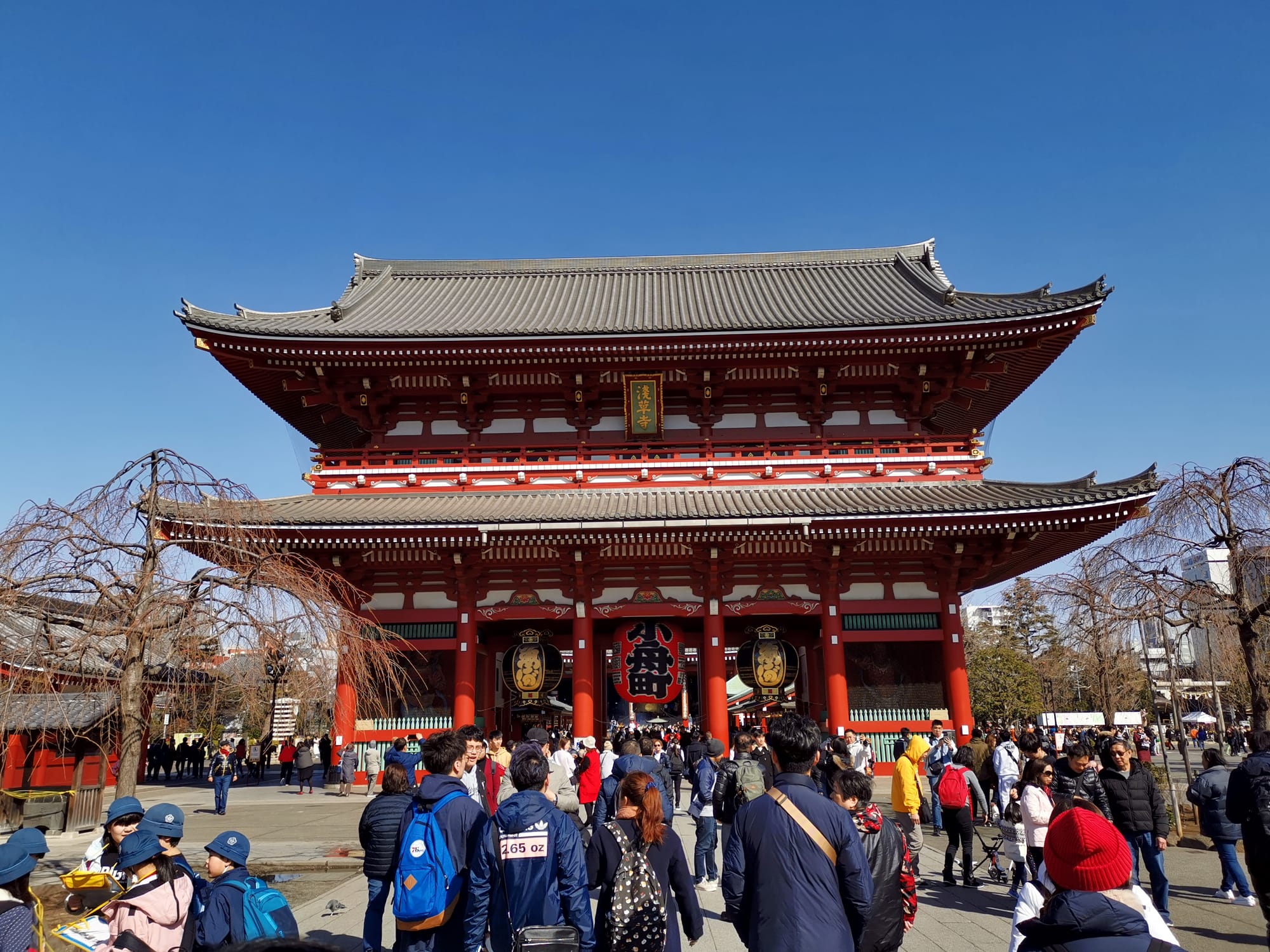
Leading up to the temple is a bustling shopping street called Nakamise. Along here, the stalls were selling all sorts of tat for the tourists to spend their money on - everything from fancy chopsticks to katana umbrellas. What more could you want?!
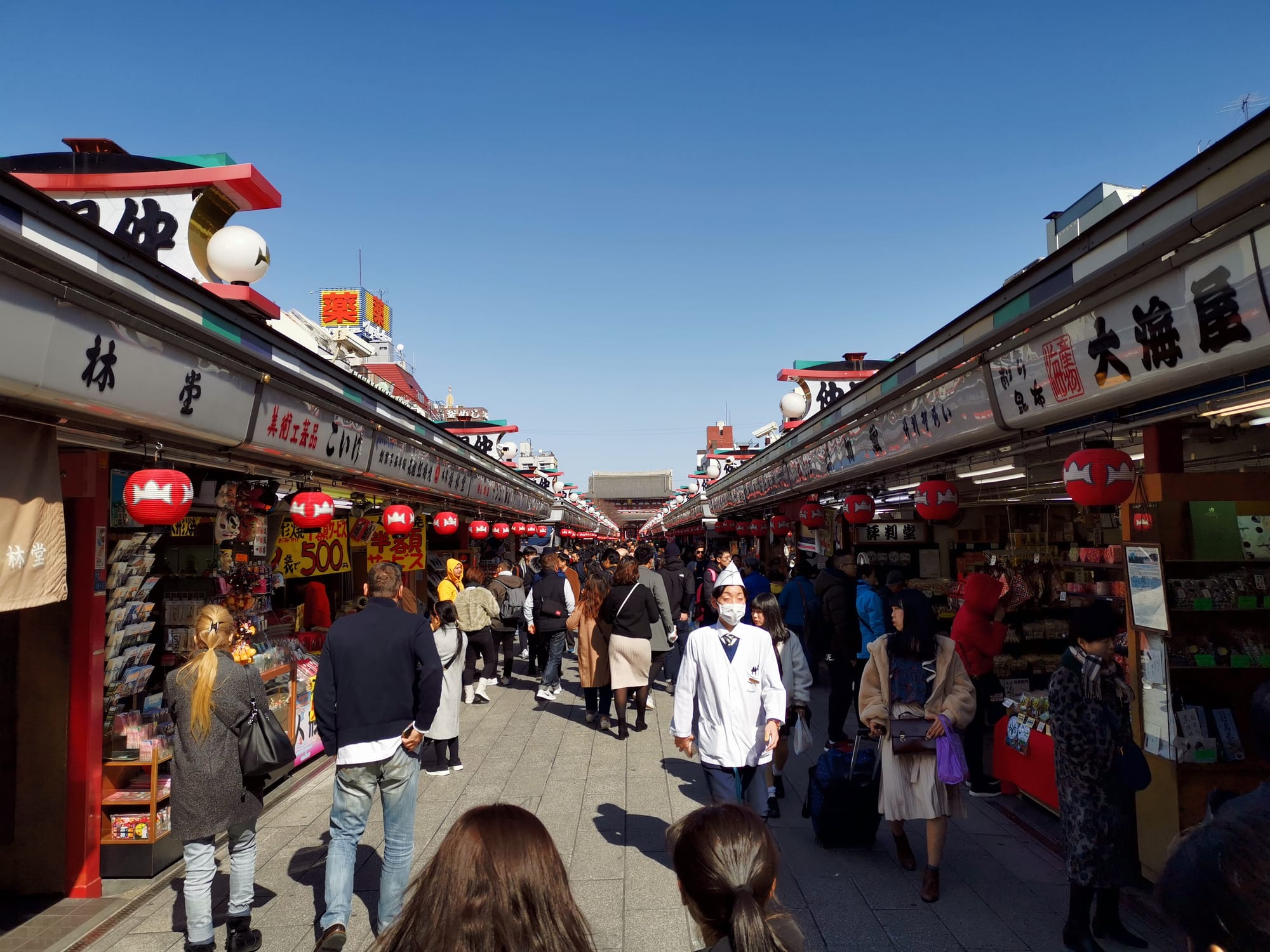
After about an hour of walking around, we decided that we'd had enough of the cold and so popped into the nearby information centre that just so happened to have a café on the fifth floor. Siwan went for the usual hot chocolate whereas I went for the matcha tea, a very popular drink in Japan.
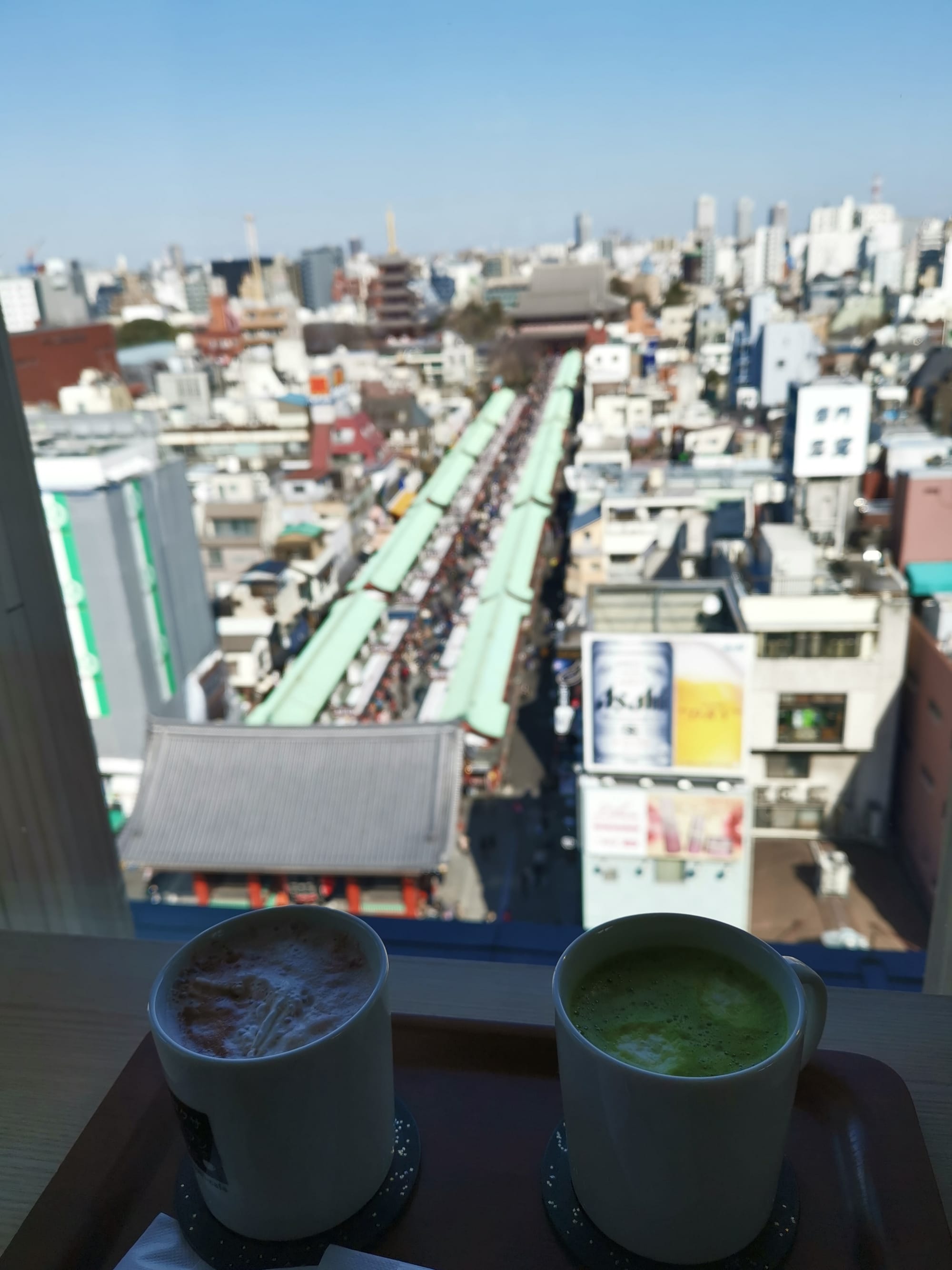
We warmed up a bit before venturing out into the cold again (we definitely weren't used to this weather anymore). We came across a nice little tonkatsu restaurant shortly after and went in for some lunch.
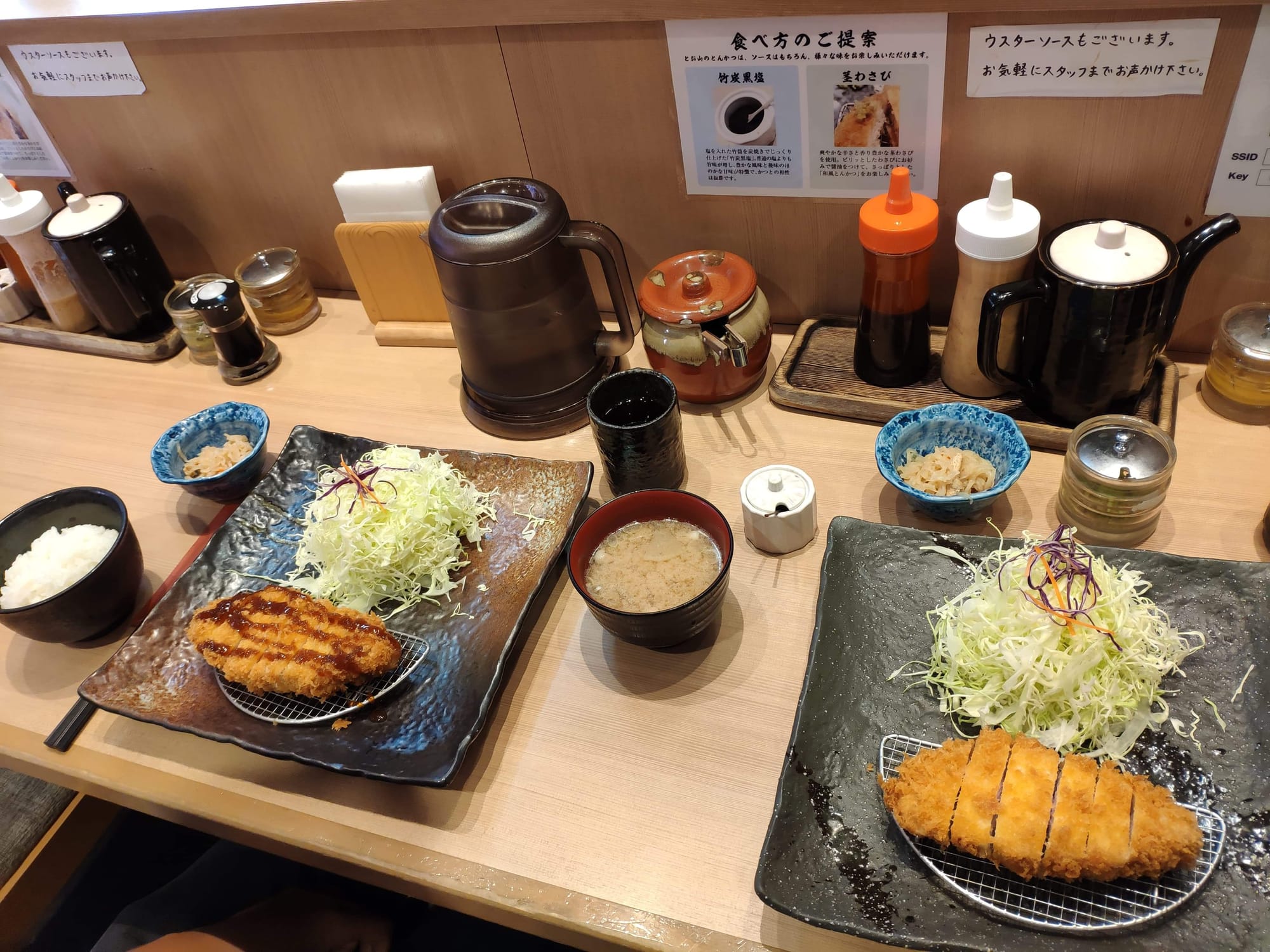
By the time we were finished, it was time to go and check-in at the hostel. Once we were in, we set up our beds and chilled out for a bit. The hostel was pretty modern and spotlessly clean, our bed compartments were cosy and comfortable, and the bathing area came complete with an onsen (Japanese hot spring).
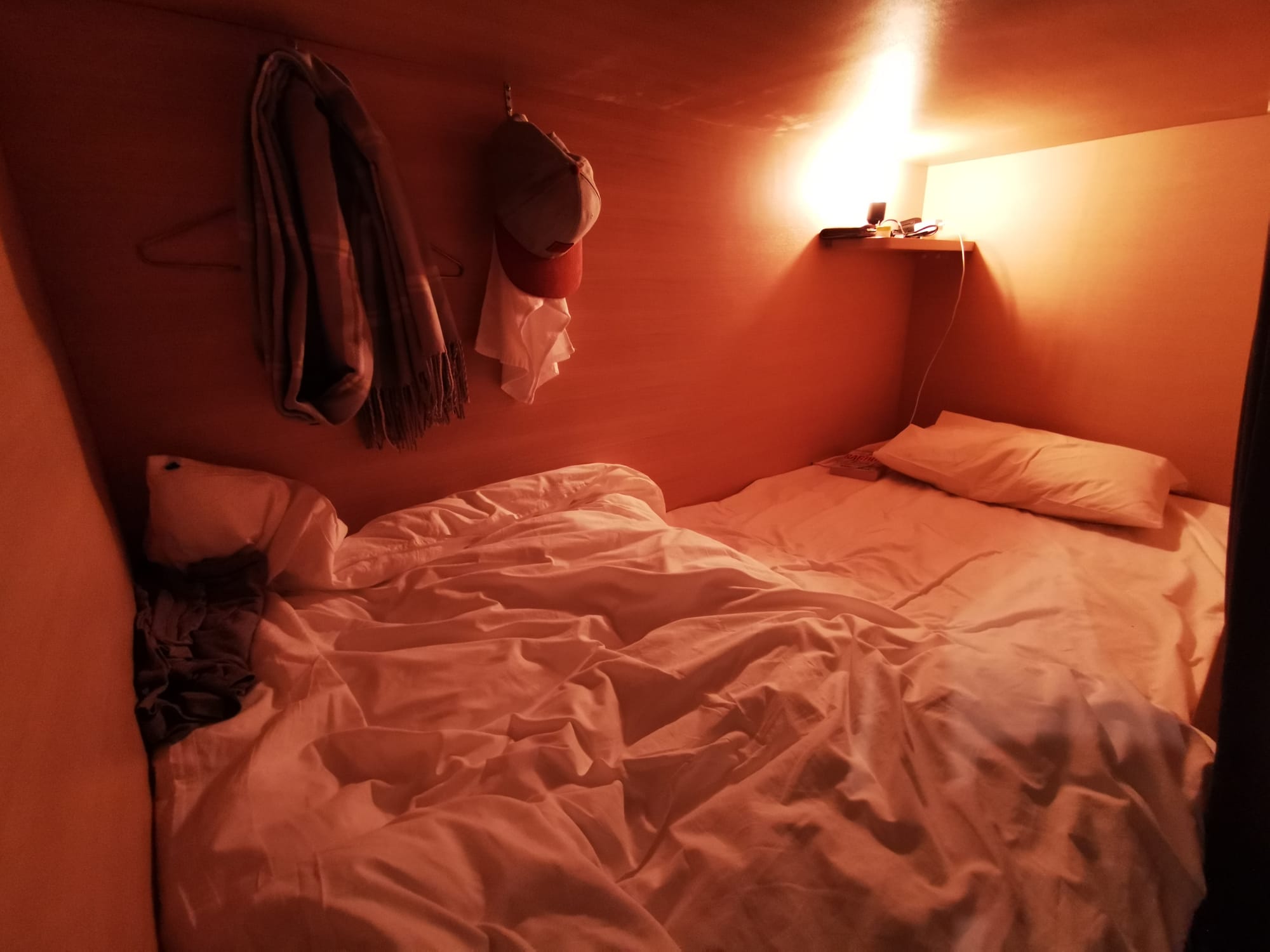
In the evening, we went exploring more of Asakusa. Being lit up at night only added to the charm of the streets in this area.
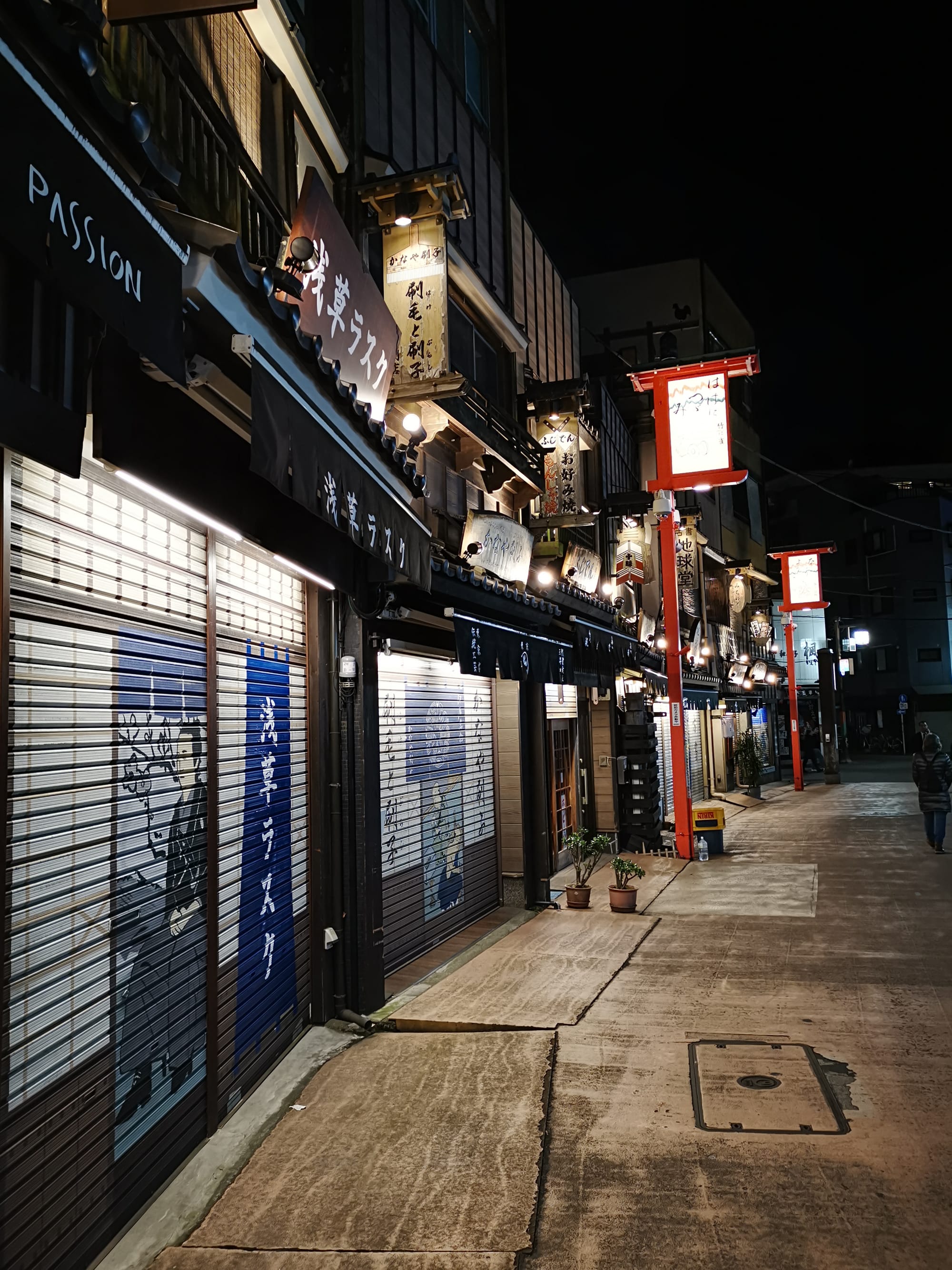
Day 2
In the morning, we took the subway over to the famous Shibuya area. This special ward of Tokyo is home to the famous Shibuya Scramble Crossing, as well as many other popular tourist hot spots.
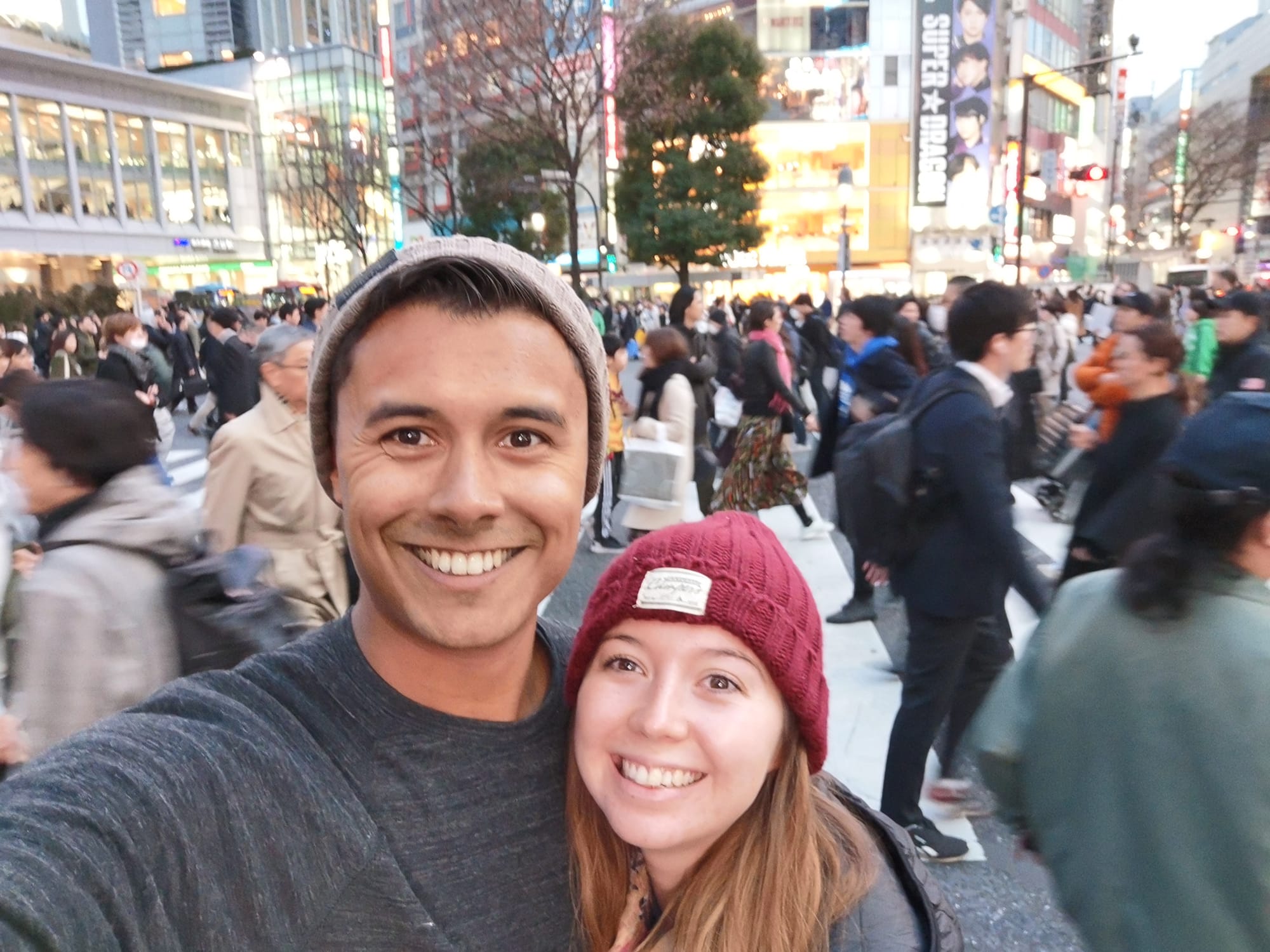
Right outside the entrance of Shibuya Station is a bronze statue of Hachikō, the Japanese dog who has become a symbol of unwavering loyalty in Japan. The short version of Hachikō story is that he used to meet his master, Hidesaburō Ueno, outside Shibuya Station everyday. When his master died, he continued to wait for his return for over 9 years, every single day perched on the same spot. Futurama pays homage to Hachikō in the episode, 'Jurassic Bark'.
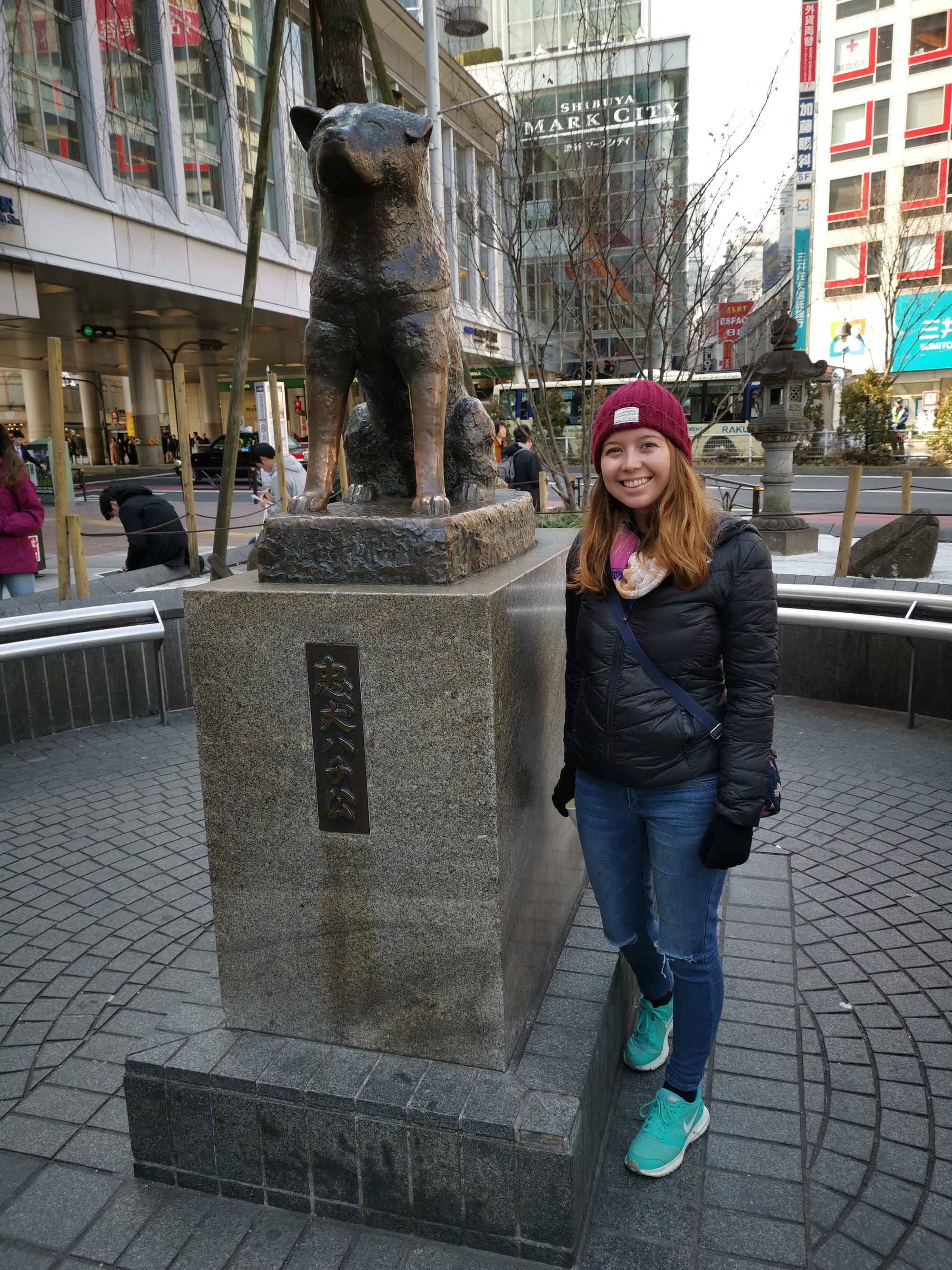
Next stop was Takeshita Street, a quirky shopping street in the Harajuku neighbourhood. There was definitely a lively, youthful vibe around here. We strolled up and down the street having a browse through some of the shops along the way. I think I must have heard the phrase, ”Irasshaimase!” about a hundred-thousand times in one hour here. The phrase is a greeting commonly used by shop assistants as a polite way welcome you into their store. Endearing at first, a little off-putting when the same person has said it to you five times in a row.
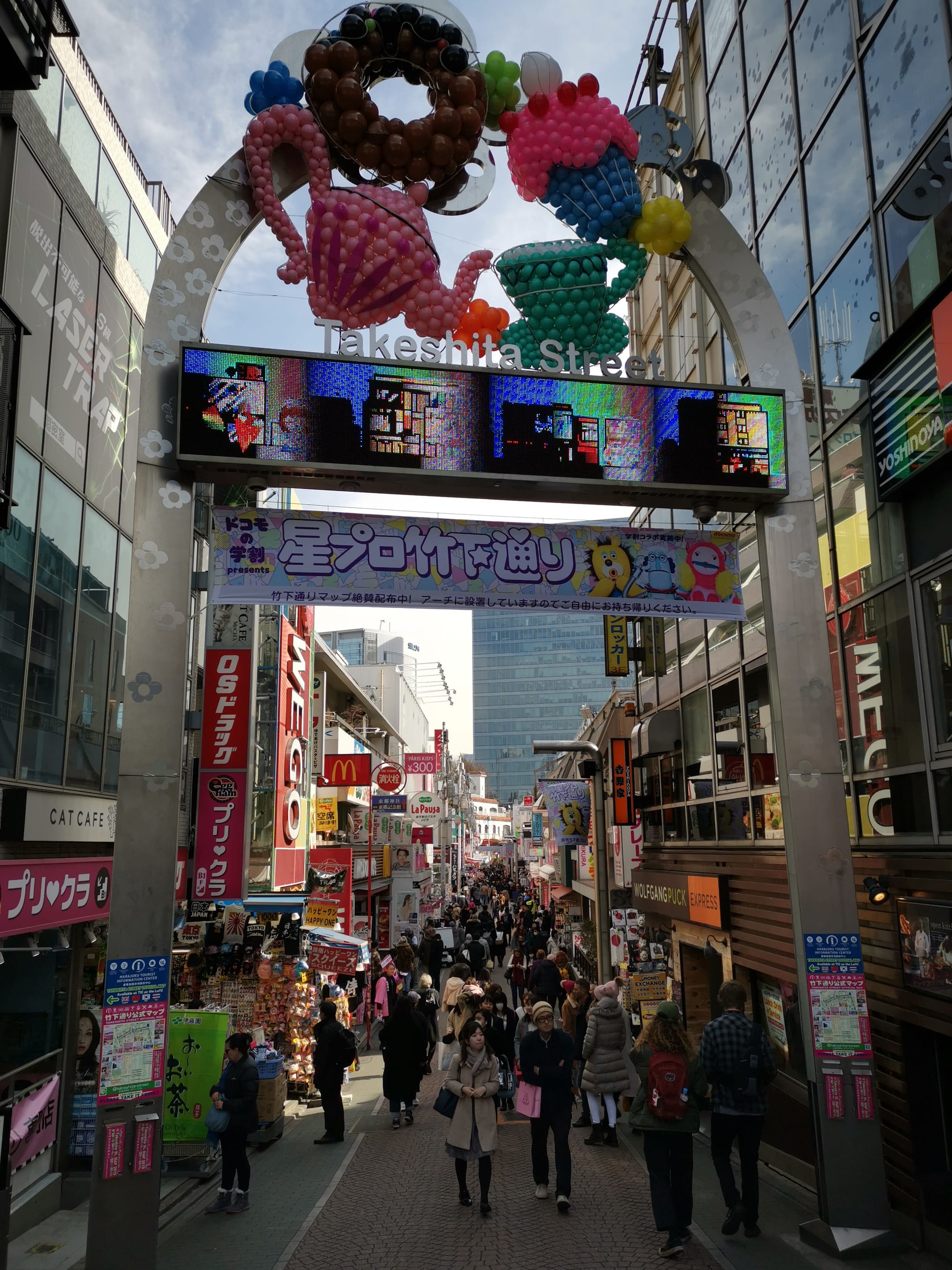
On the opposite side of the road from Takeshita was the entrance to Yoyogi Park and Meiji Jingu, a prominent Shinto shrine.
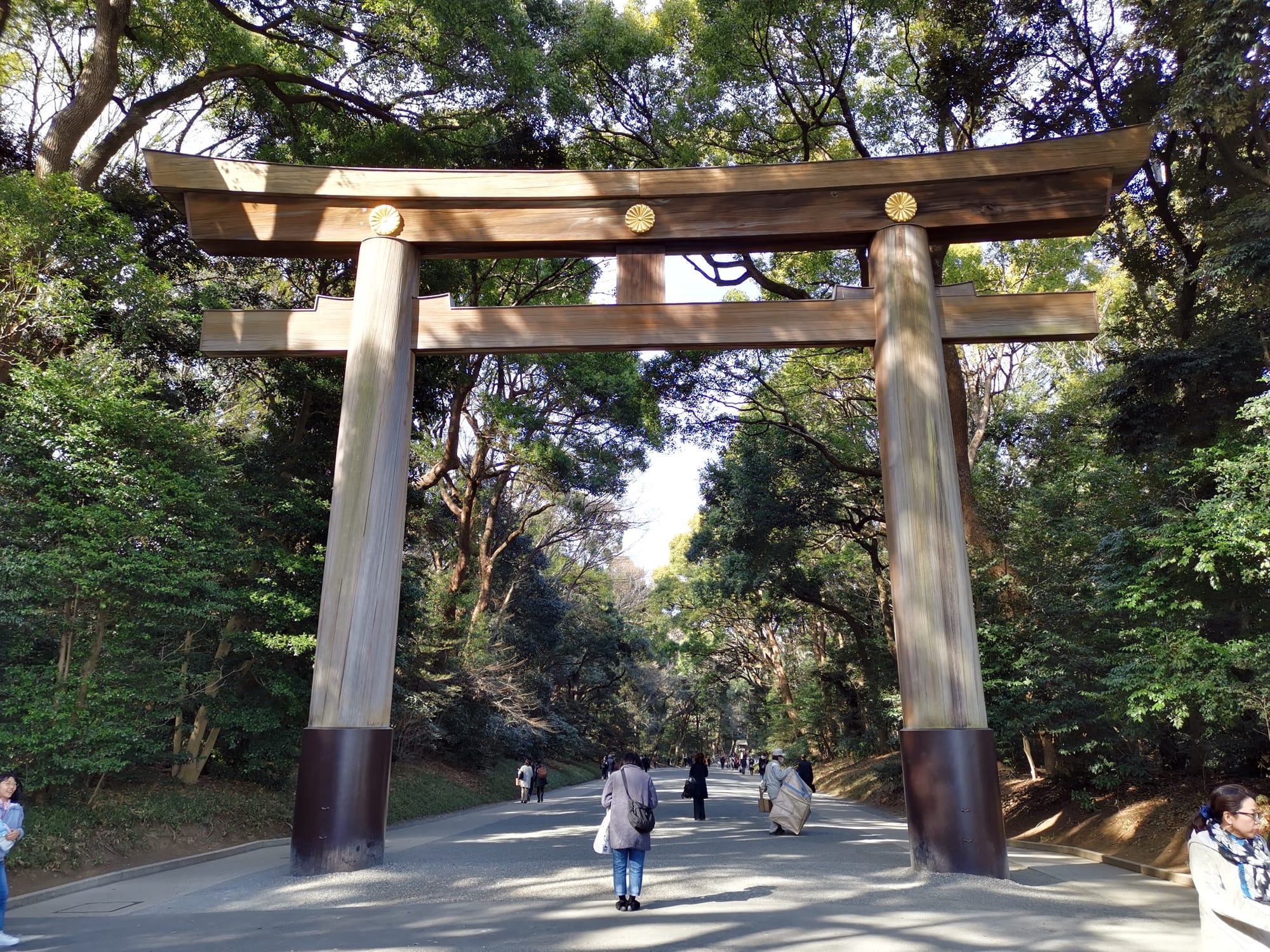
The woodland walk down from the First Torii Gate took us past the iconic sake barrels before leading us to the shrine itself.
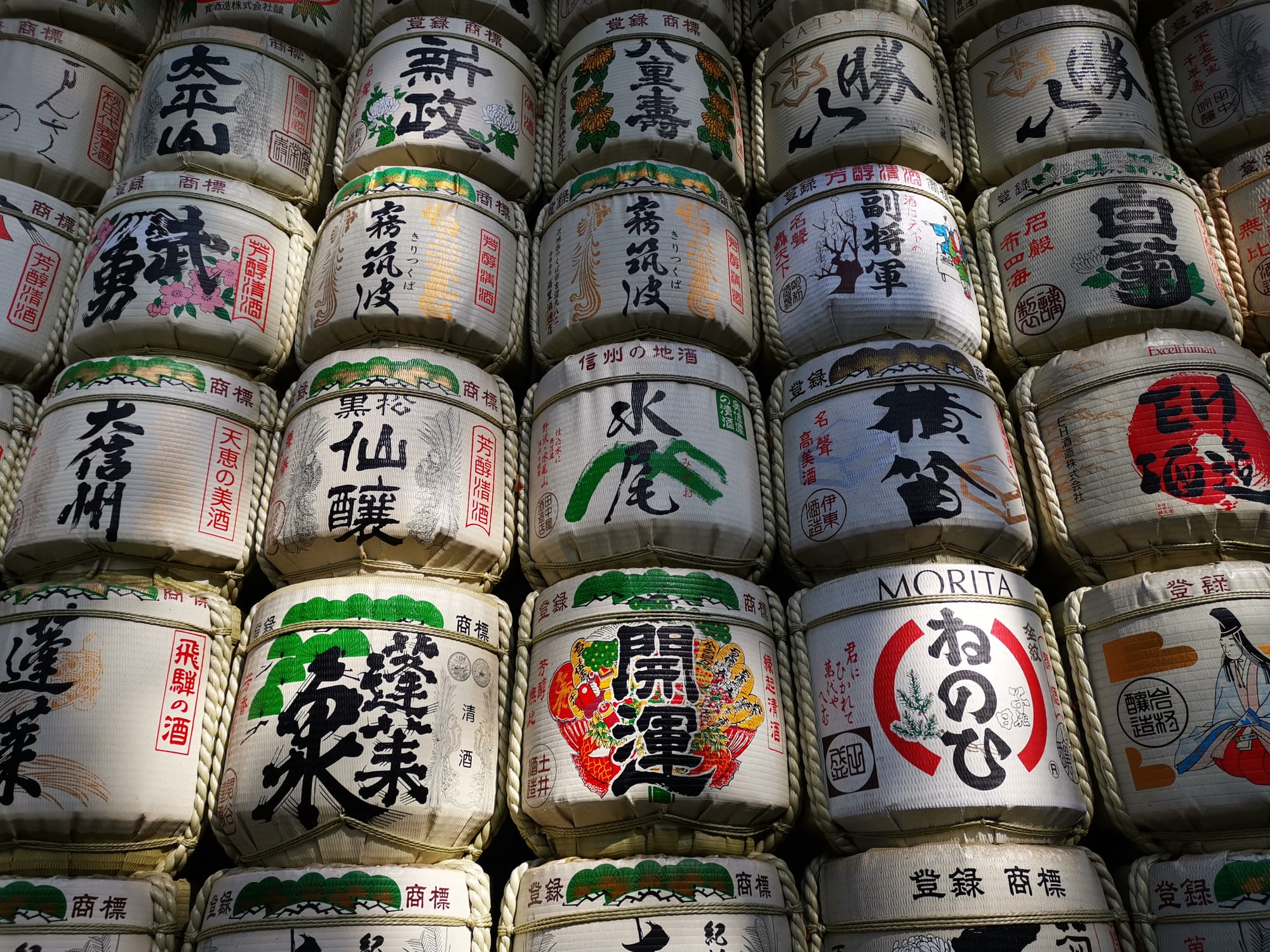
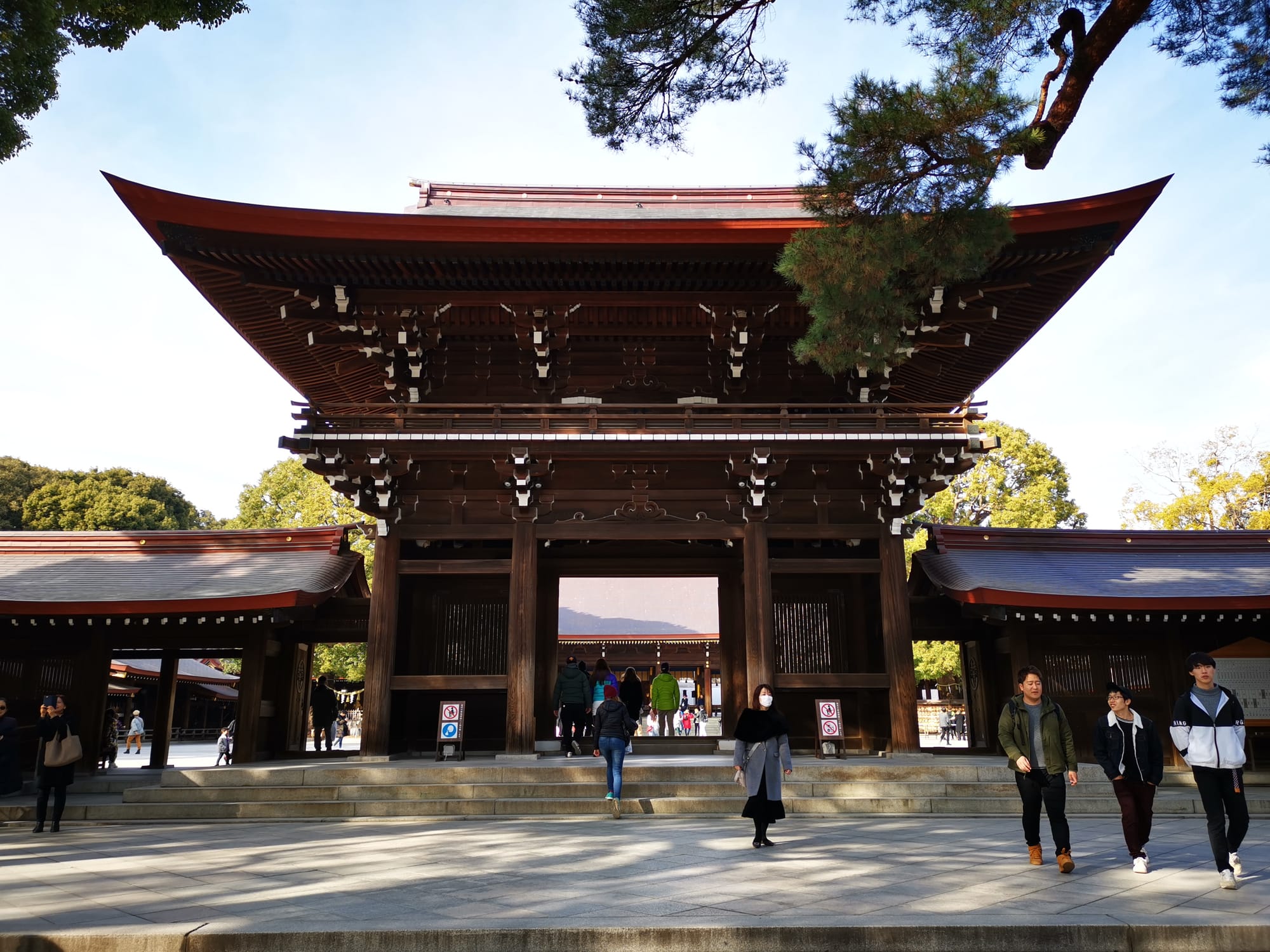
Afterwards, we made our way back to Shibuya Station, stopping briefly to have a look at the Scramble Crossing from a nearby rooftop viewpoint.
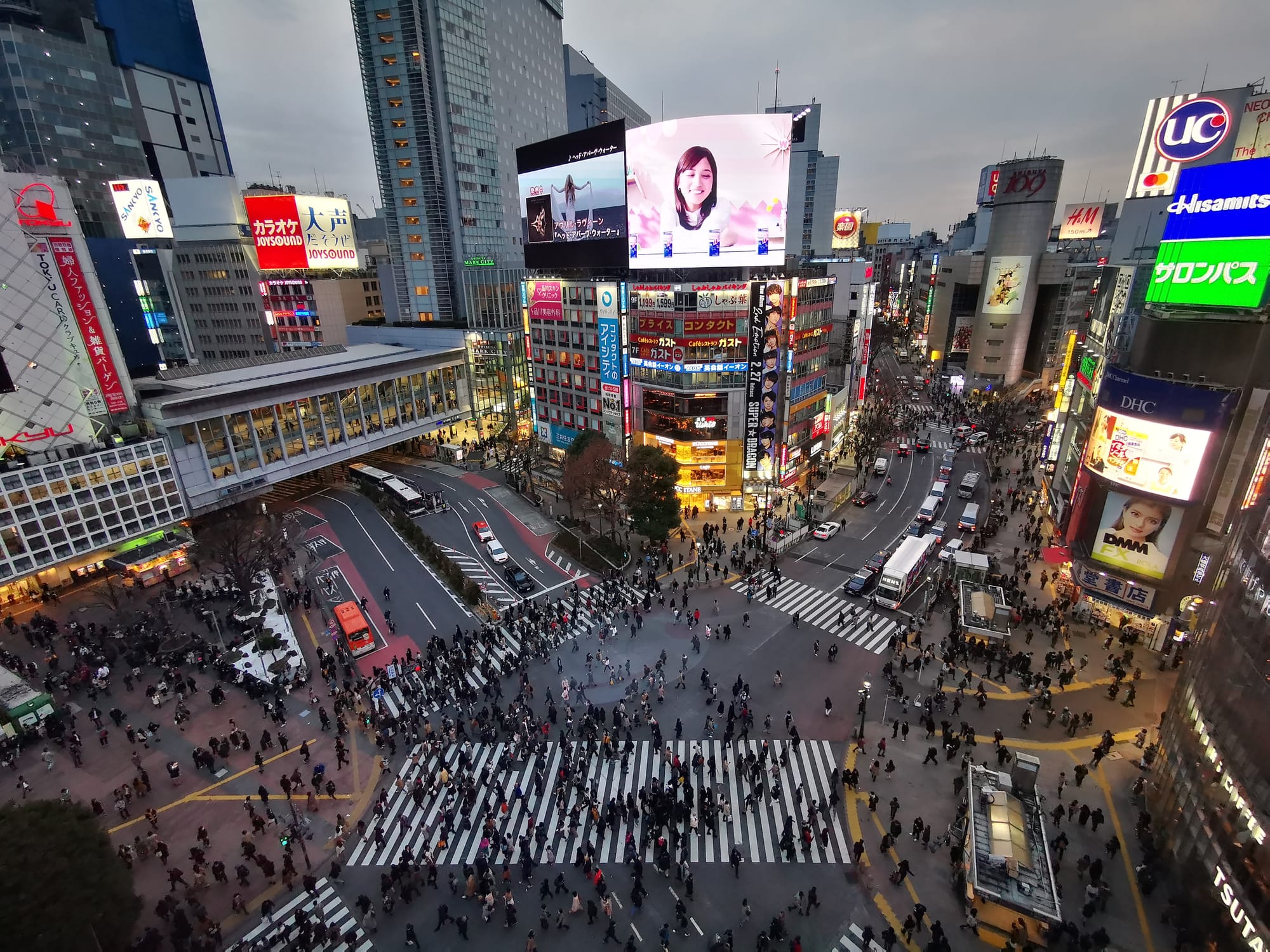
Next, we caught the train over to the world's busiest train station, Shinjuku Station. We shuffled our way through the crowds thronging the platform and out into the neon illuminated streets of one of Tokyo's most densely populated areas.
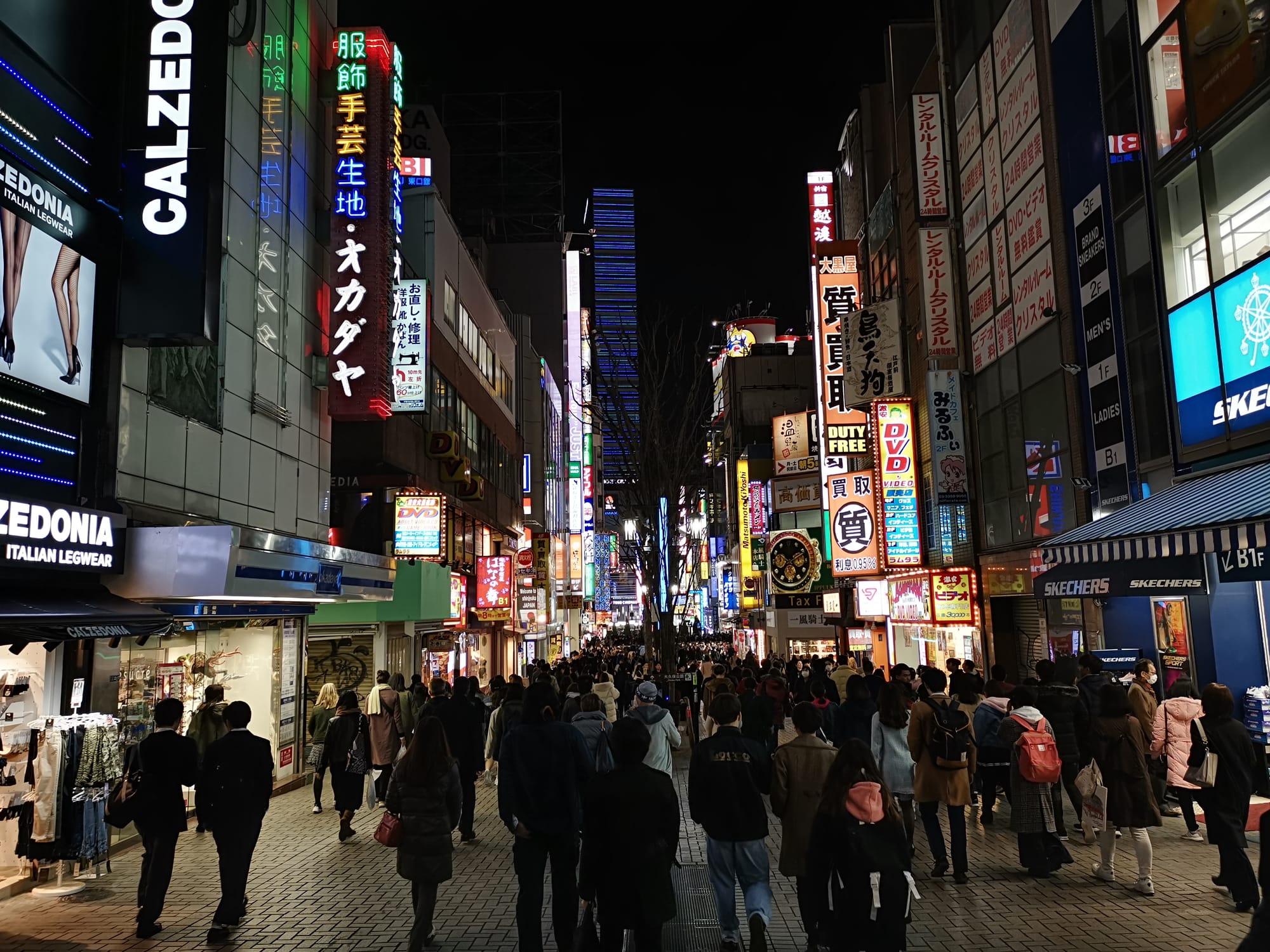
We sauntered over to Shinjuku's Golden Gai, an area of narrow, winding alleyways lined with tiny bars and restaurants. The somewhat scruffy, unmodernised aesthetic of this district is exactly what makes it stand out, especially when compared to Shinjuku's vibrant shopping streets.
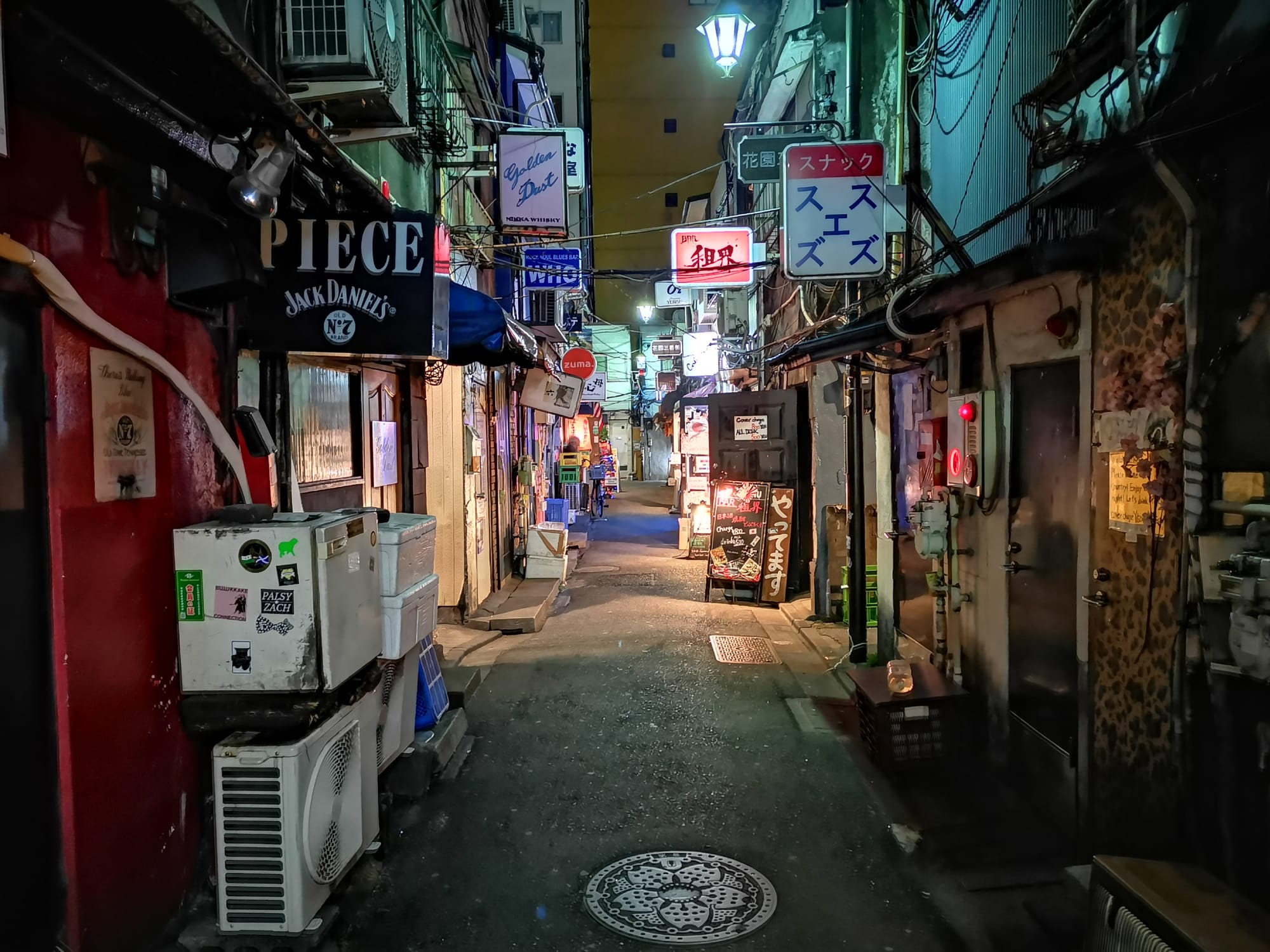
I found the whole area to be enchanting, like a hidden gem in the heart of Tokyo. After walking up and down the alleys for a little, we stopped at one of the small bars to have drink.
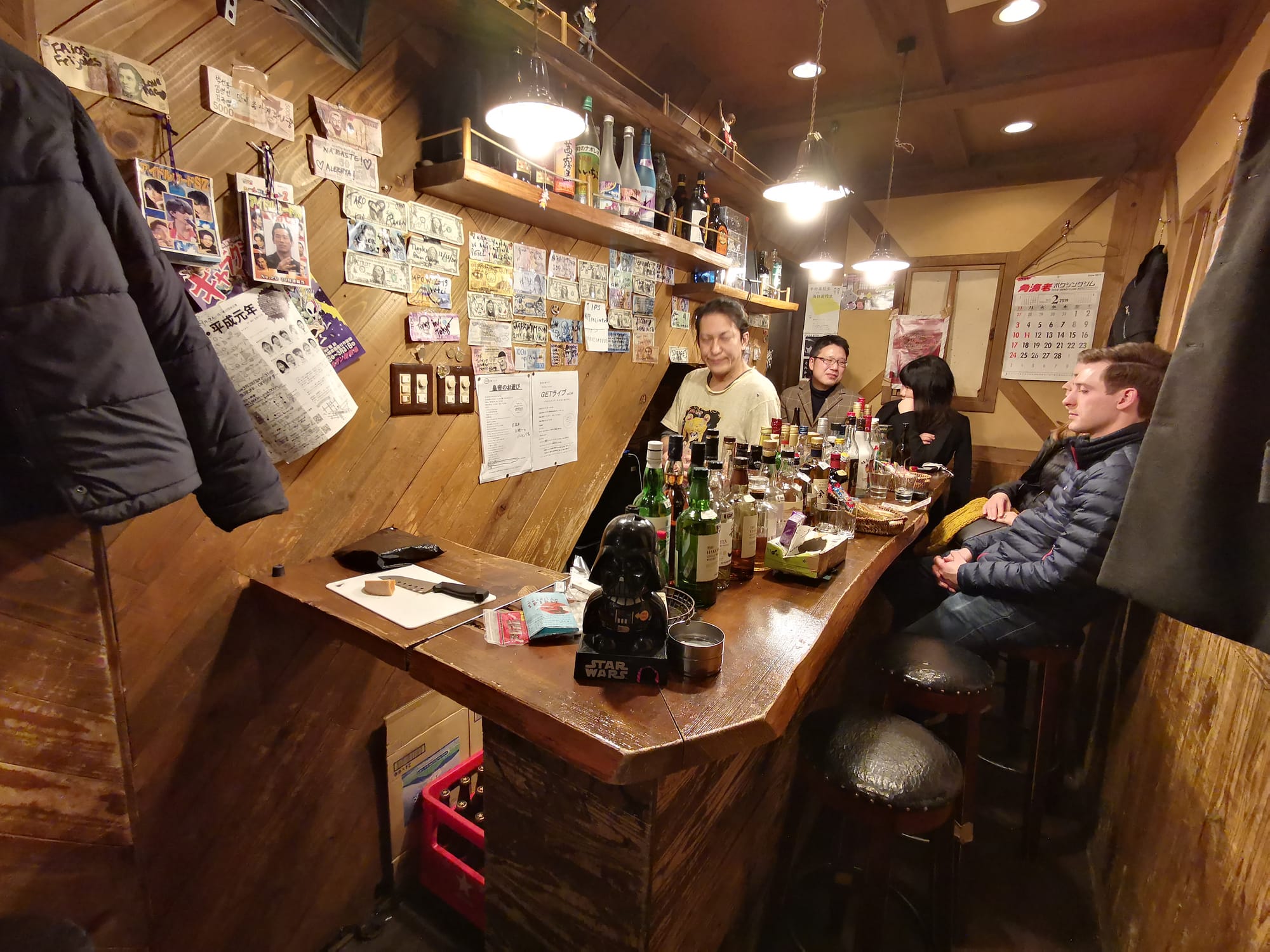
For dinner we decided to get some ramen as we'd heard that Shinjuku was one of the best areas for it. A quick Google search led us to an Ichiran Ramen, perhaps the most famous ramen chain in Japan. Here, you begin by ordering your ramen and extra goodies from a vending machine type thing which dispenses tickets (not your noodles). Then you are given an order sheet so that you can customise your ramen. Only at this point do you actually enter the dining area. The unique thing about this part is that you sit side by side in individual booths which are separated by wooden dividers; the idea being that you can focus on the flavour of your ramen without any distractions. A little quirky, yes, but absolutely delicious too!
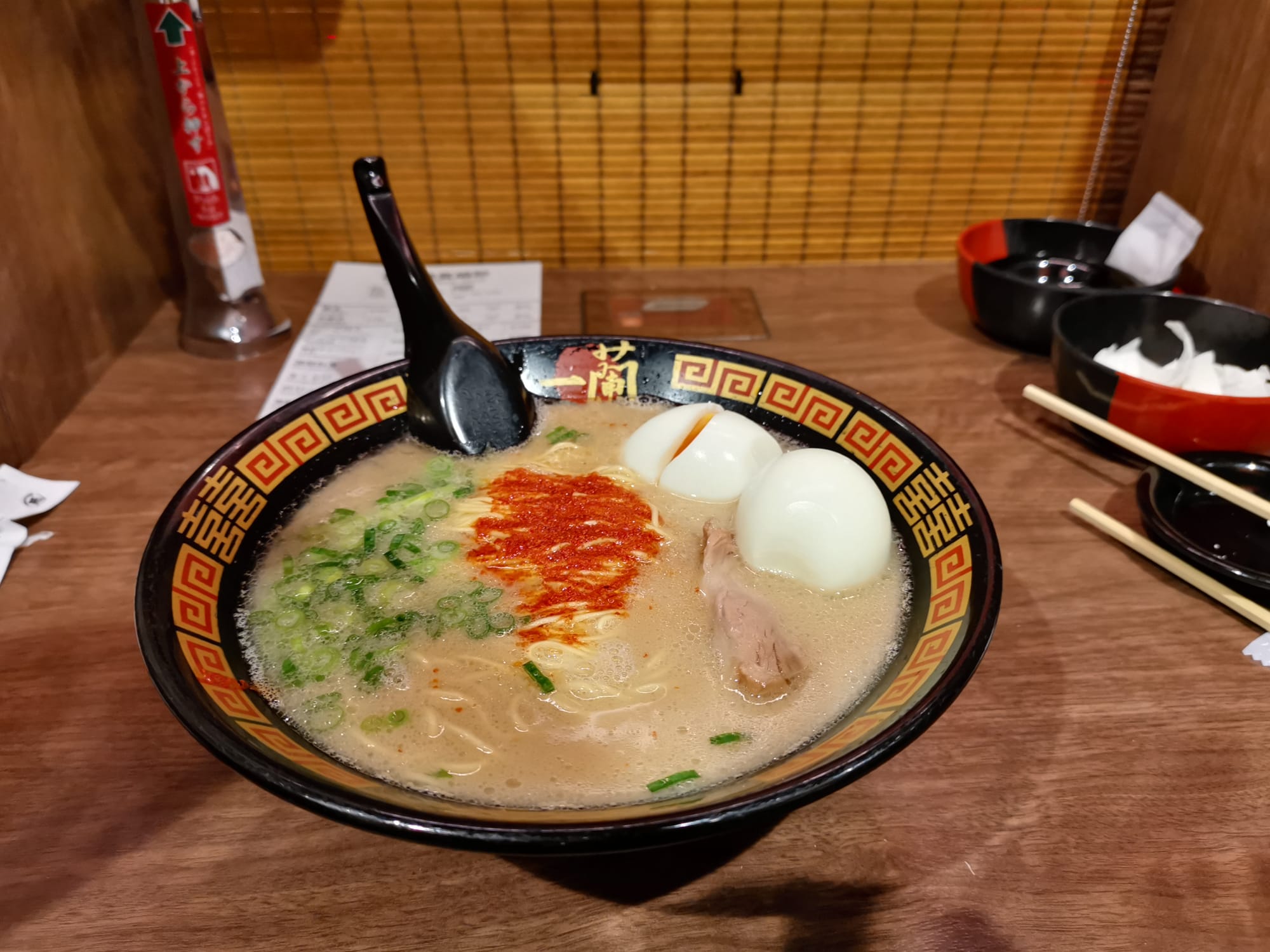
Later, we spent some time strolling down Omoide Yokocho, a famous alleyway similar to those over in the Golden Gai area; it had lots of tiny little food stalls and bars crammed into a single, narrow lane. As we walked through, we noticed that it was a popular spot for businessmen to knock back a few drinks, presumably on their way home from a long day at work.
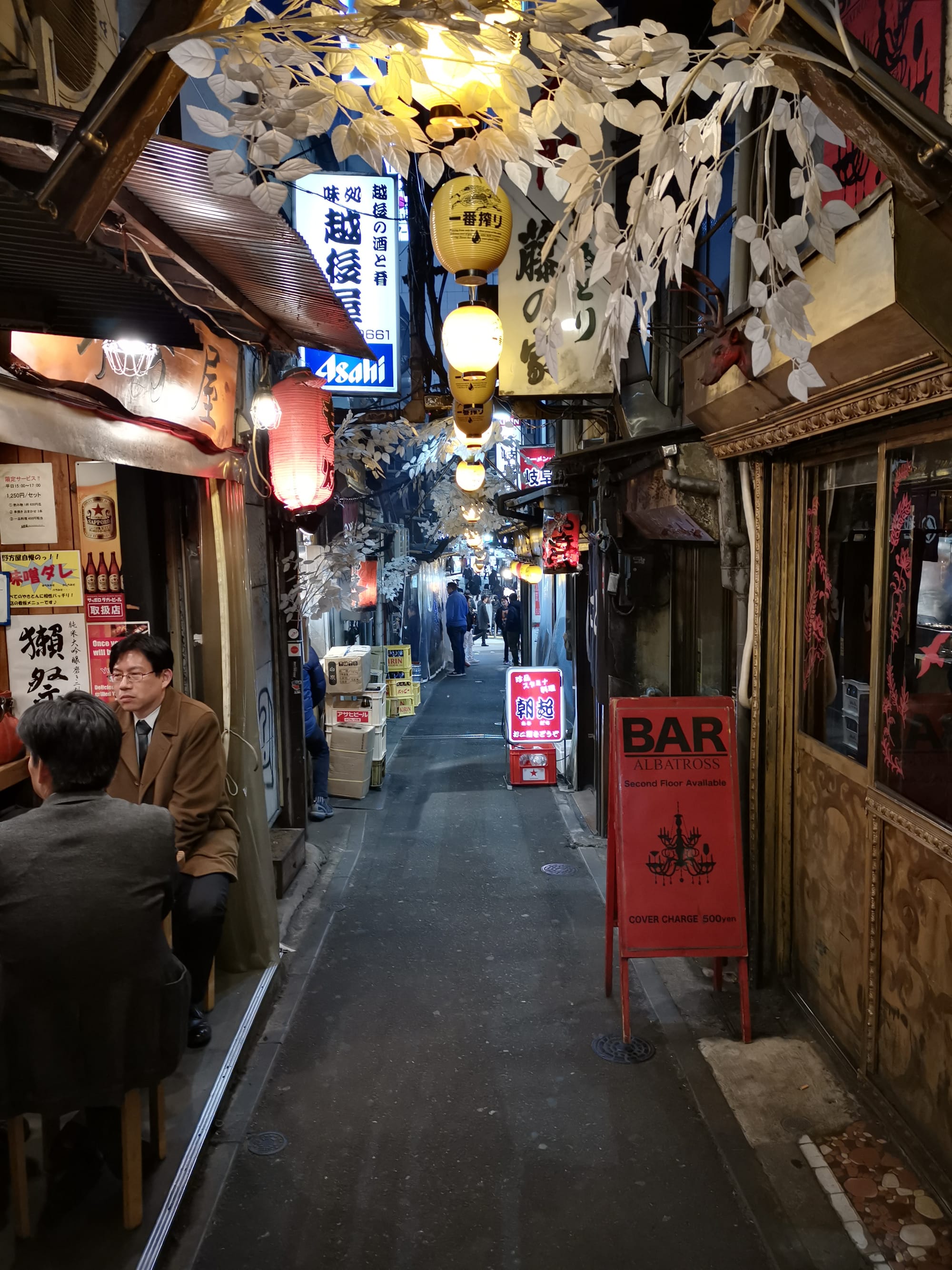
To top off the night, we headed over to the Tokyo Metropolitan Government Building where we were able to get a fantastic view of the city (for free!) from the 45th floor observation deck. It was an excellent way to end a busy day.
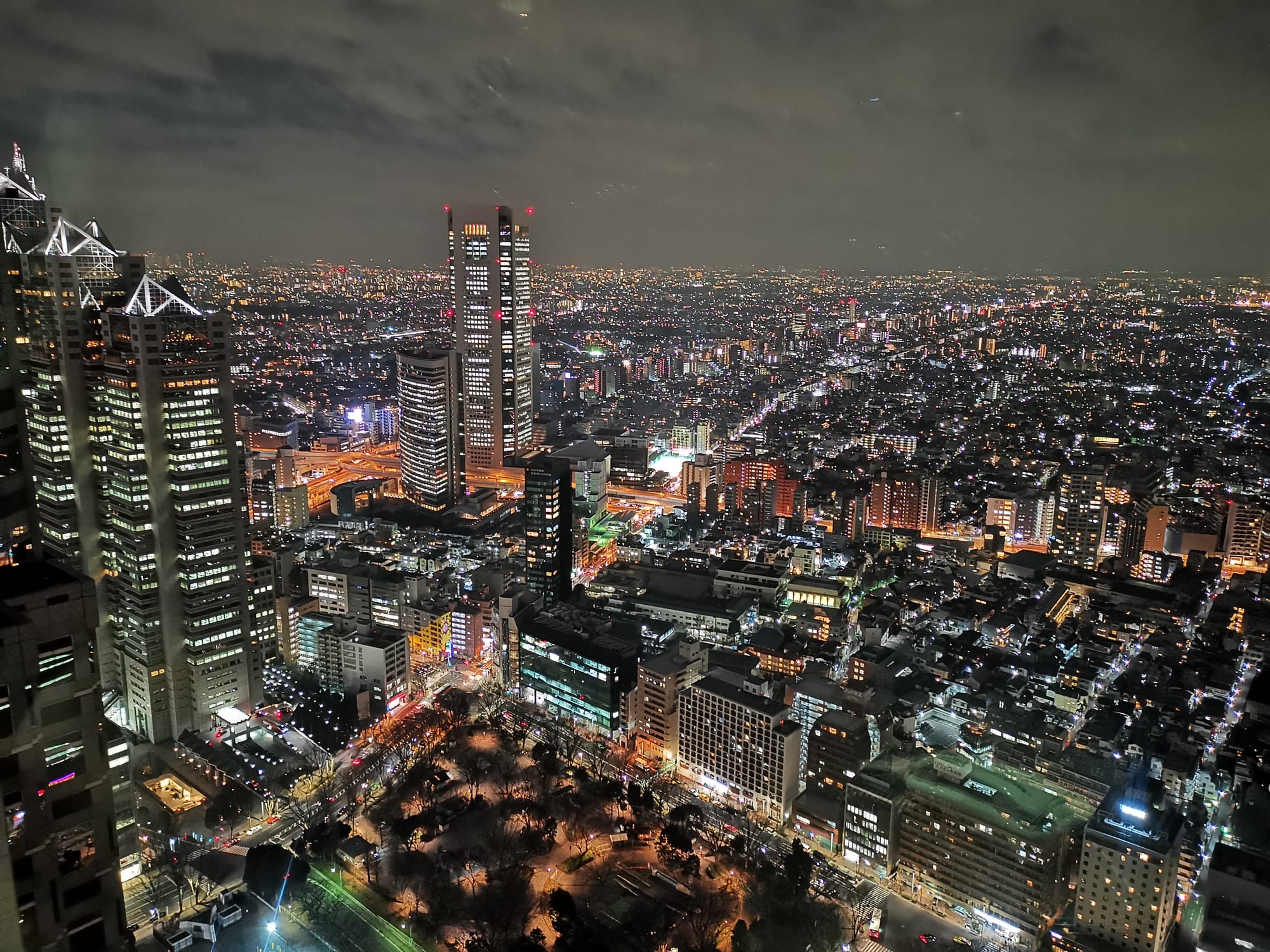
Day 3
We began the following day with a trip to Ueno park which was only a short train ride from our hostel. When we arrived, some sort of food festival was taking place in the central area of the park. Bonus!
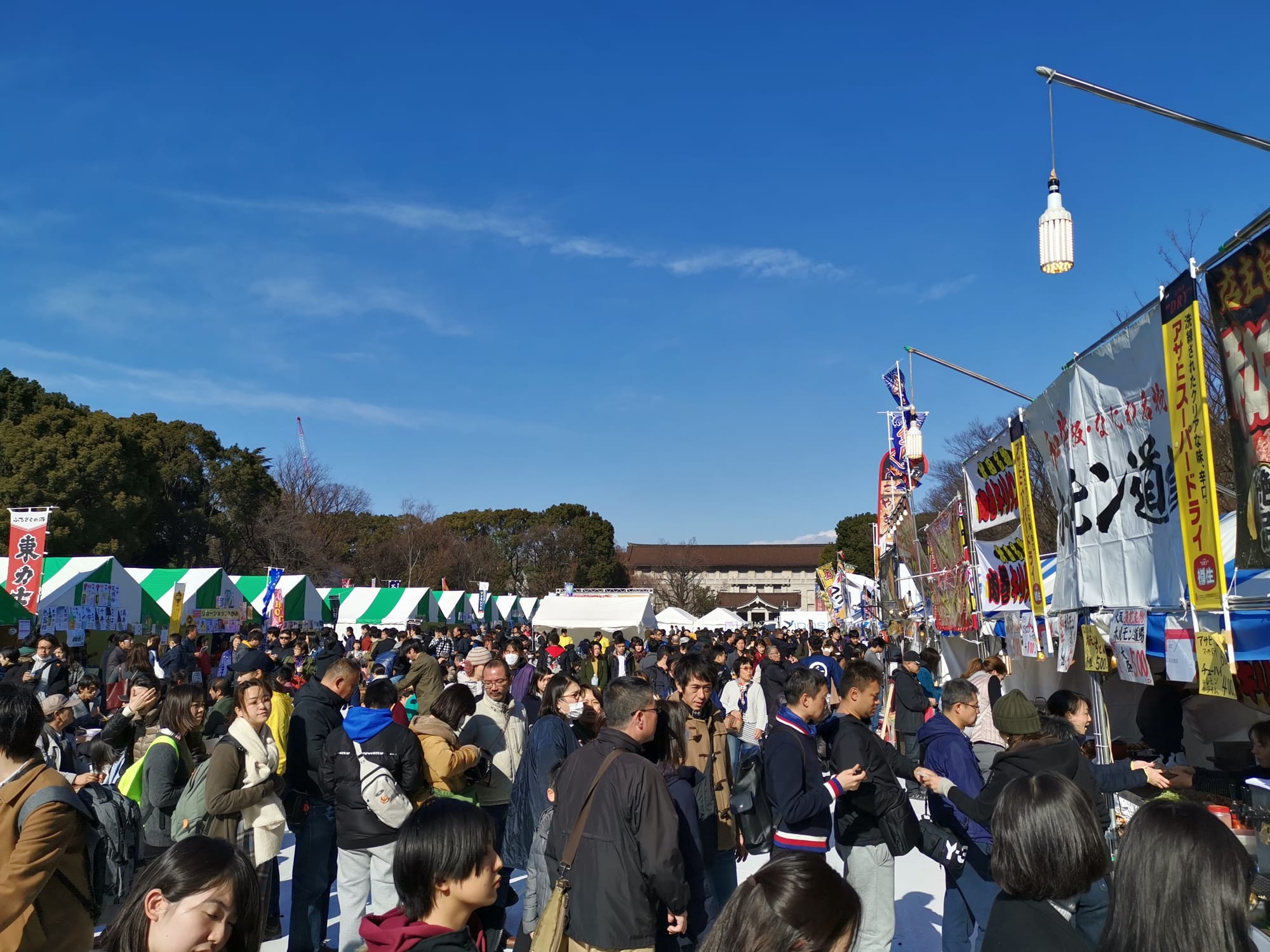
Towards the back of the park was the Tokyo National Museum, one of the largest art museums in the world. My favourite exhibits were the ones showcasing the old samurai armour and swords. Siwan's favourite part was learning some Japanese calligraphy.
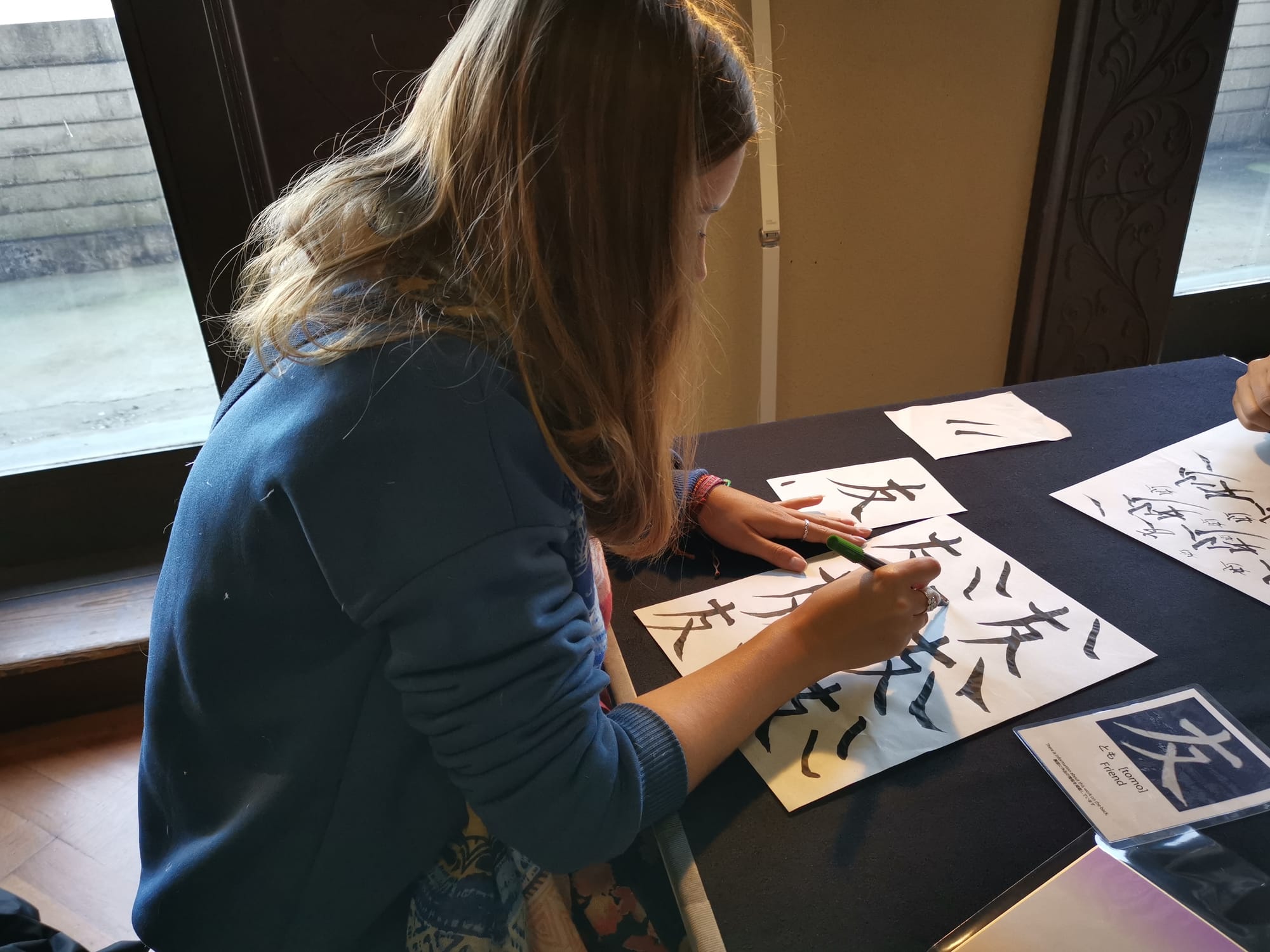
A few hours later, we left the museum and grabbed a bite to eat at the food festival. Entertainment was provided by a man in a loincloth posing on a wooden box. His show was entitled: The Living Museum of Art. It was actually pretty funny and was made all the more impressive by the fact that it was bitterly cold outside at the time.

We spent the afternoon/evening looking around Akihabara, Tokyo's main district for electronics, gaming and anime.
The first shop we entered was an electronics megastore called Yodobashi Camera. There was a lot going on in here: one of the floors even housed its own video game arcade. As busy and overstimulating as it was, I had a great time (Tokyo) drifting through the numerous aisles.
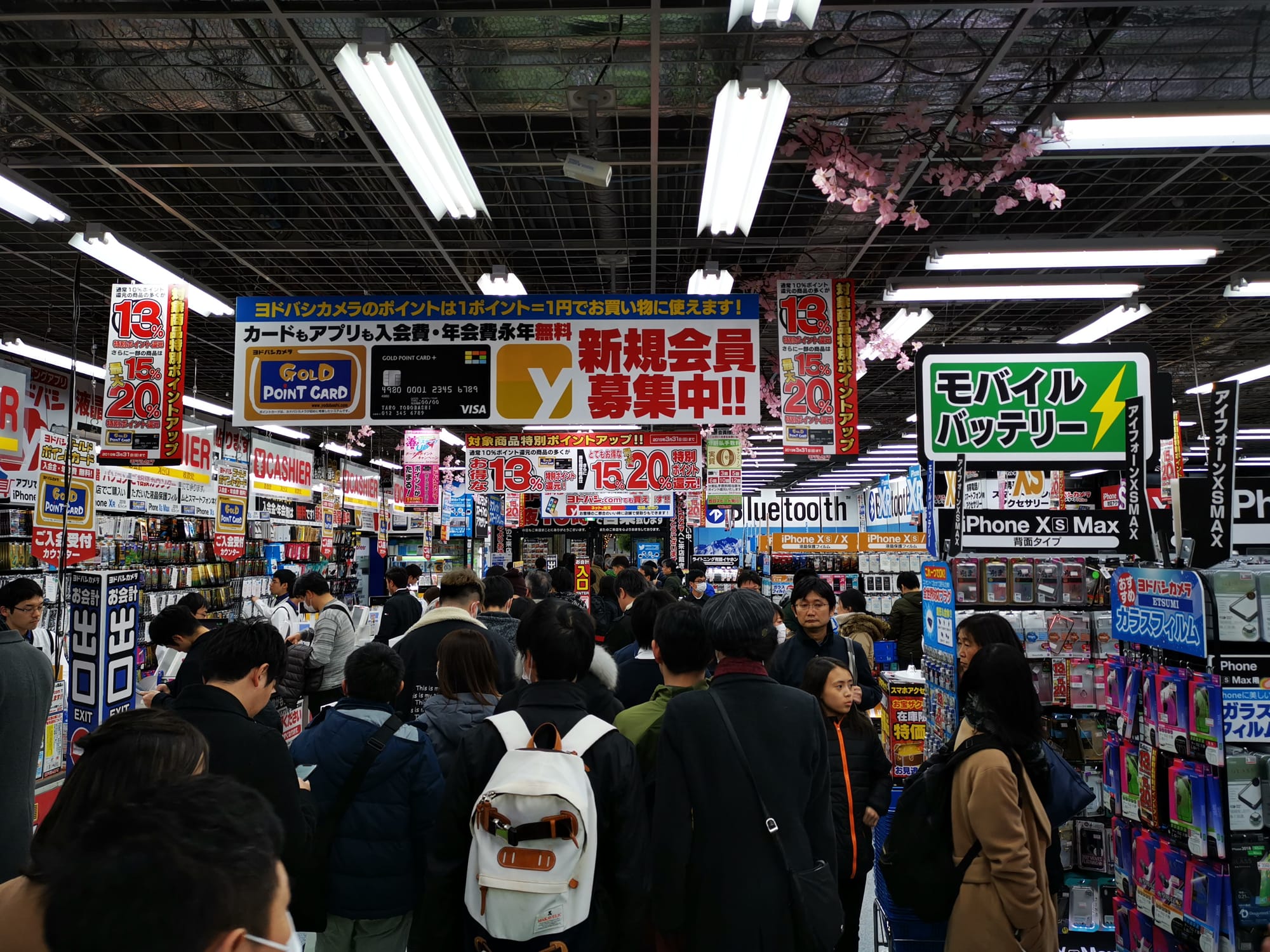
At little while later, we picked up some dinner and headed back to the hostel for an early night as Siwan had started to feel unwell.
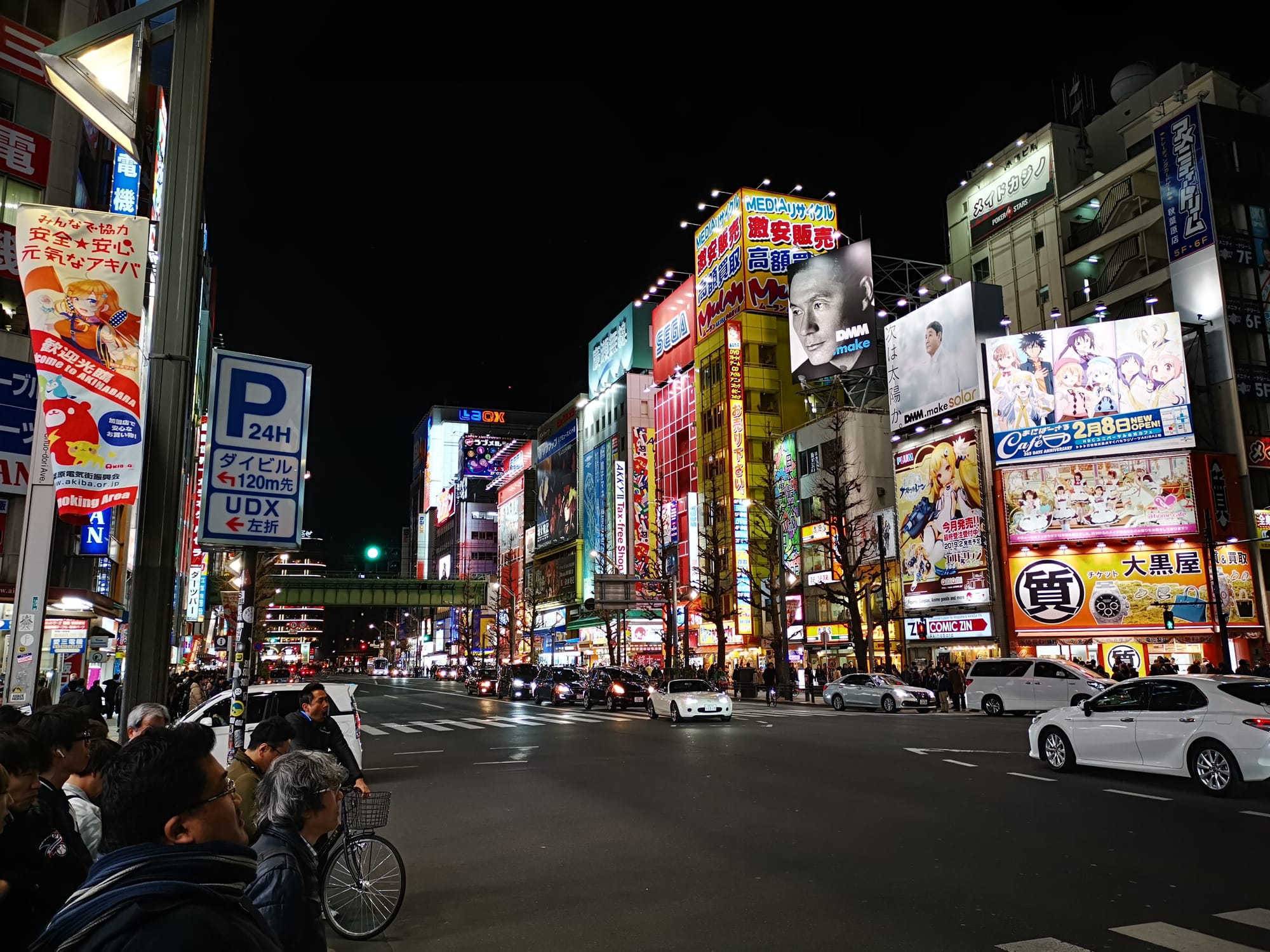
Day 4
Unfortunately, Siwan had come down with a potent case of the bad belly. Still, she was as determined as ever to go out and enjoy the day as normal. I had a feeling she would regret this decision, but off we went anyway.
The first destination of the day was the Tokyo Imperial Palace in the centre of the city. There wasn't so much to see in terms of buildings but we had a good time exploring the beautiful surrounding parkland. We even came across some plum blossom, much to Siwan's delight.
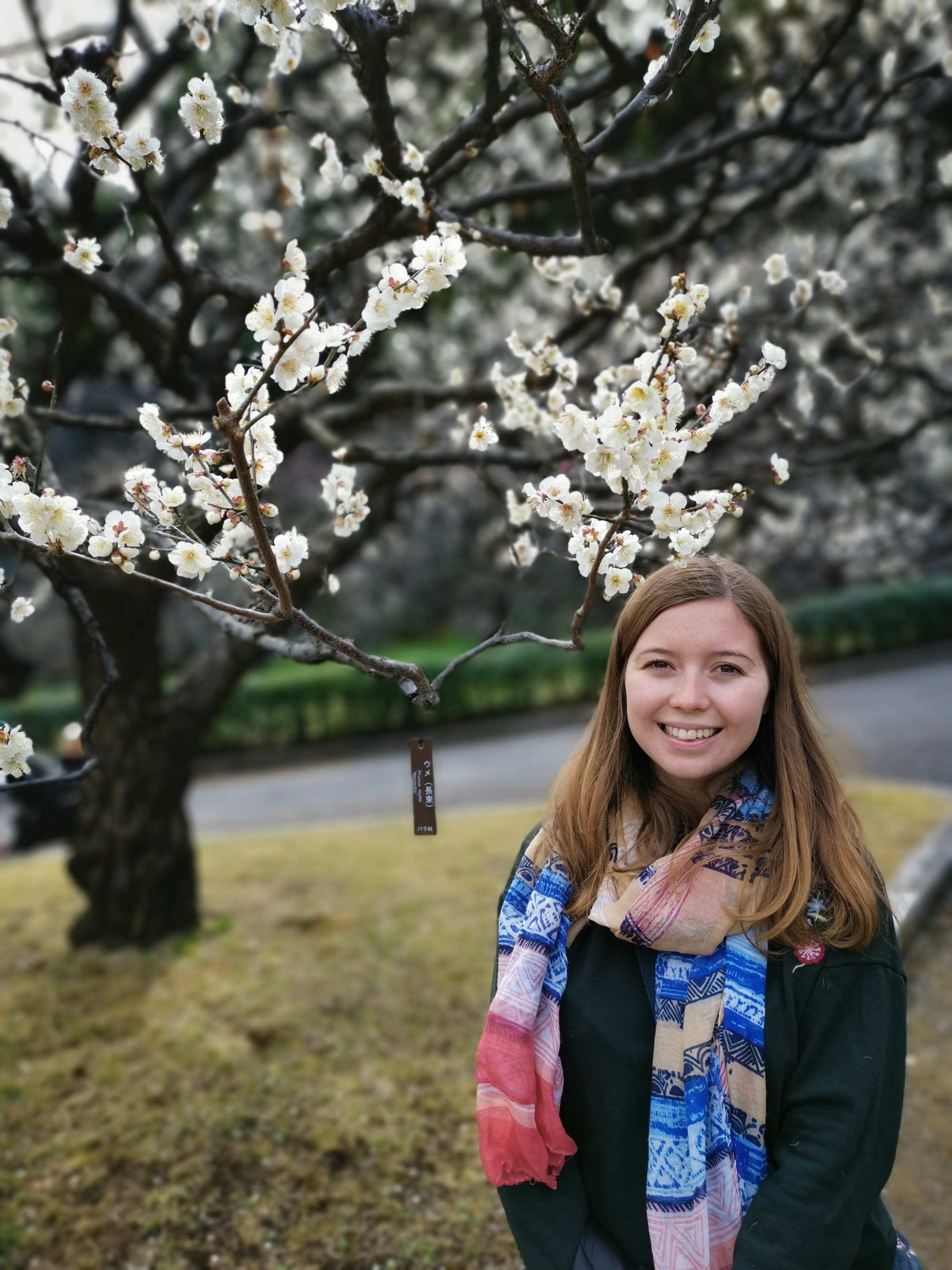
After completing a lap of the palace grounds, we made our way over to Ginza Street, Tokyo's equivalent to Regent Street. Ginza is the place to go for designer brands and swanky bars, making it one of the most popular areas in the city.
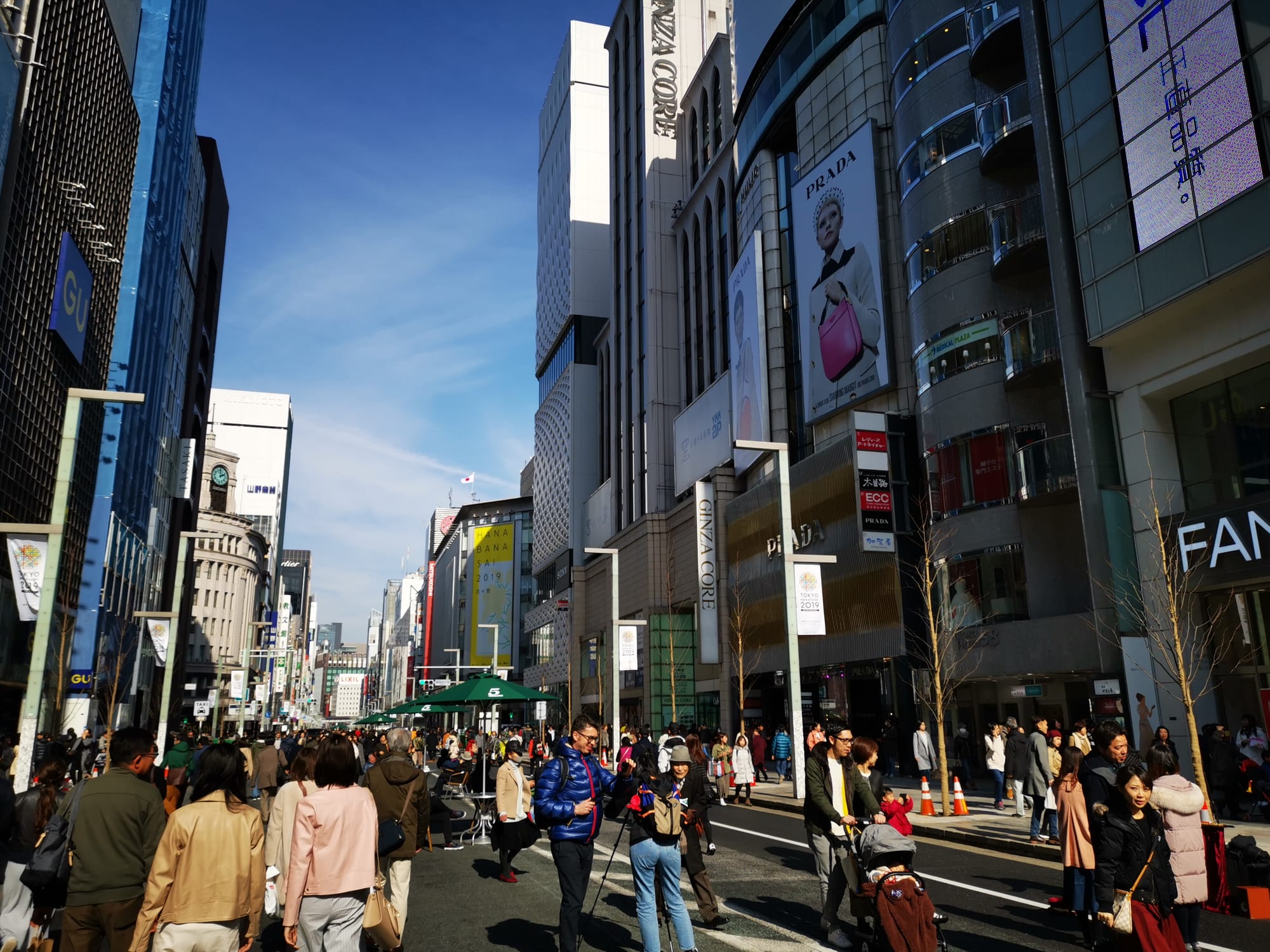
We didn't spend long in the area; however, as Siwan's stomach demons were beginning to wreak havoc, causing her to finally throw in the towel. We took the train back to the hostel so that she could relax for the rest of the night.
After dropping her off, I headed back out to have another look around Asakusa. I wandered over to the busy shopping street, Nakasime, where I was asked to be in a YouTube video. The guy who was asking me barely spoke any English and was trying to make me eat something suspect he had mysteriously produced from his pocket. I was hungry... but not that hungry so I politely refused and made my way off down the street towards Sensō-ji Temple.
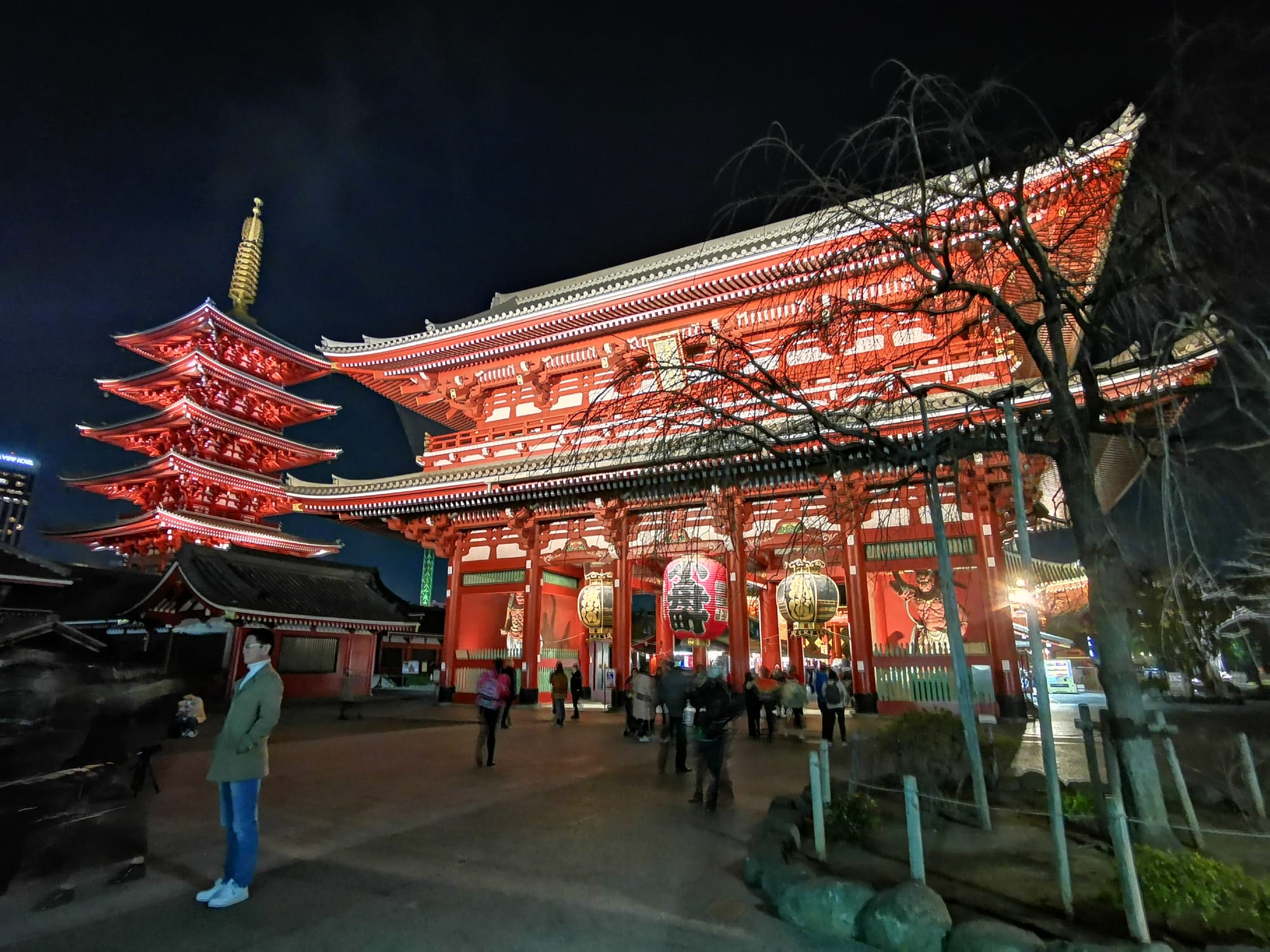
I stayed a while enjoying the sights before looking up somewhere to get some dinner. I had enjoyed my ramen the other day so much that I just HAD to get some more. As luck would have it, there happened to be an Ichiran Ramen only 5 minutes away from where I was standing.
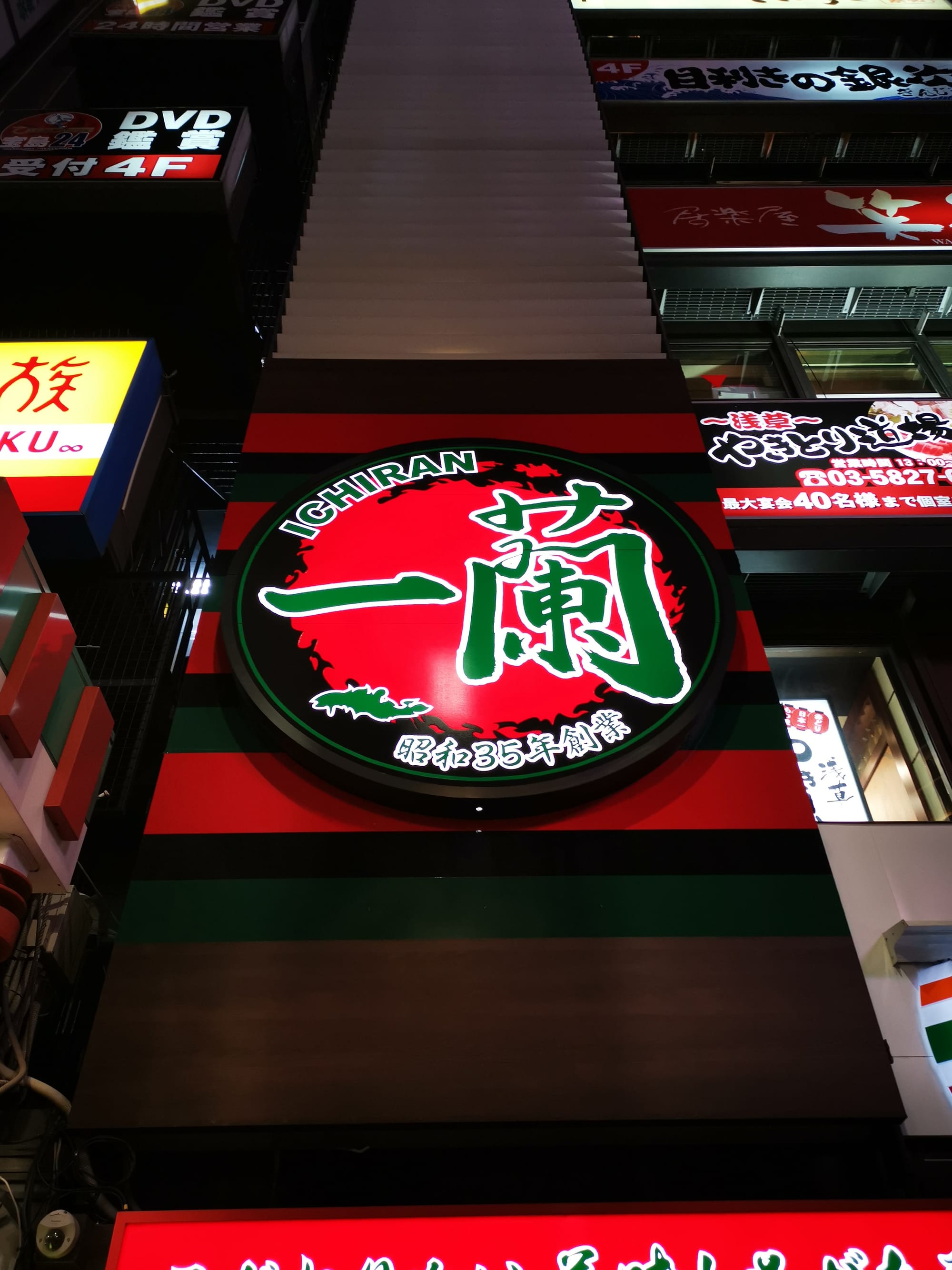
Winner.
Day 5
Our original plan for the day was to head out of Tokyo to the small, coastal city of Kamakura but as Siwan still wasn't feeling 100%, we thought it was probably best to stay closer to home.
The first part of the morning was spent browsing the market stalls around Ueno. Then, we headed all the way across the city to Shinjuku to visit the National Garden which ended up being closed.
Brilliant.
Our next stop of the day was the impressive Zōzōji Temple. The grounds were fairly large with plenty of interesting old buildings to explore.
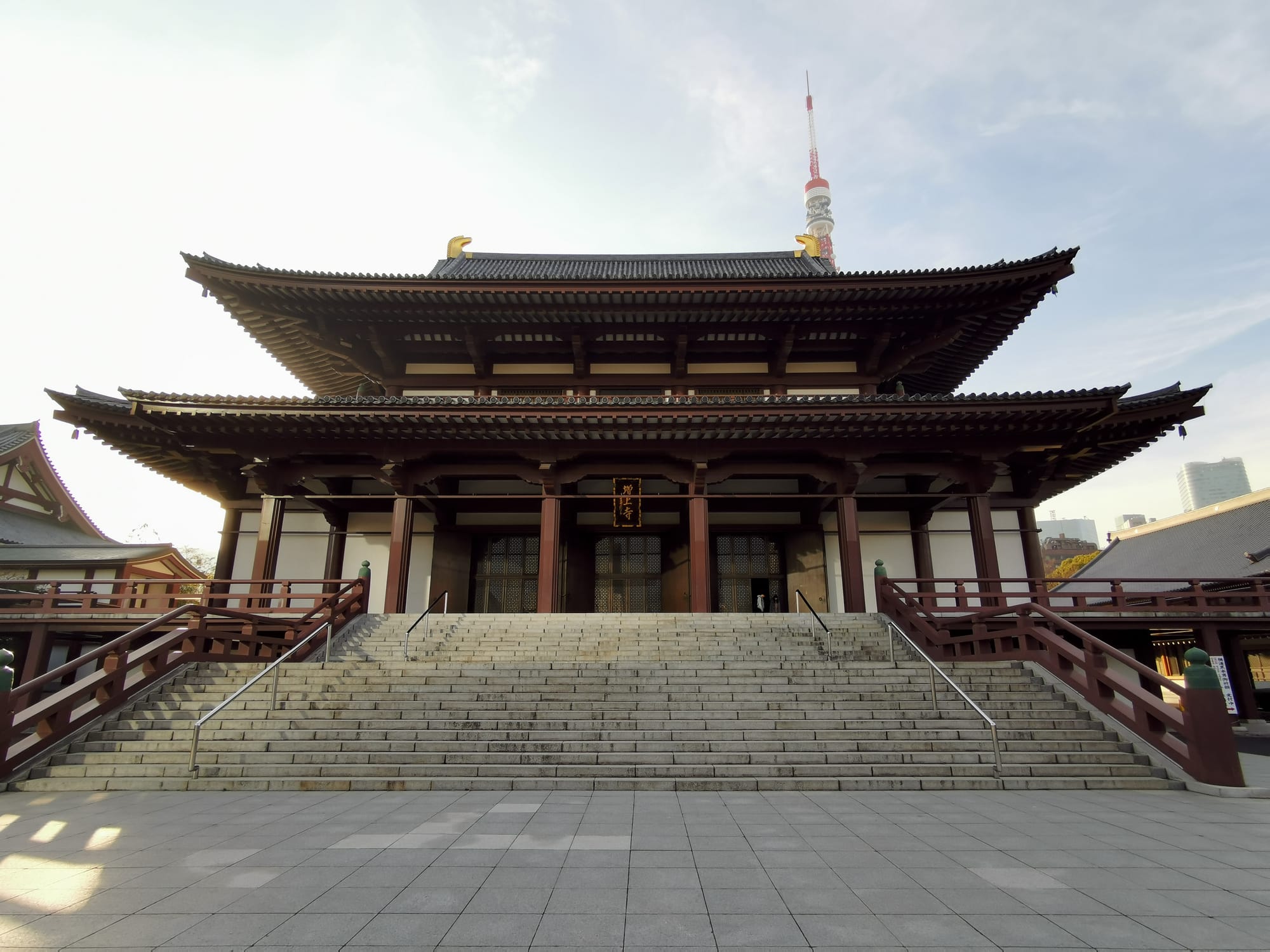
From a park directly next to the temple, we were able to get a pretty cool view of the Tokyo Tower.
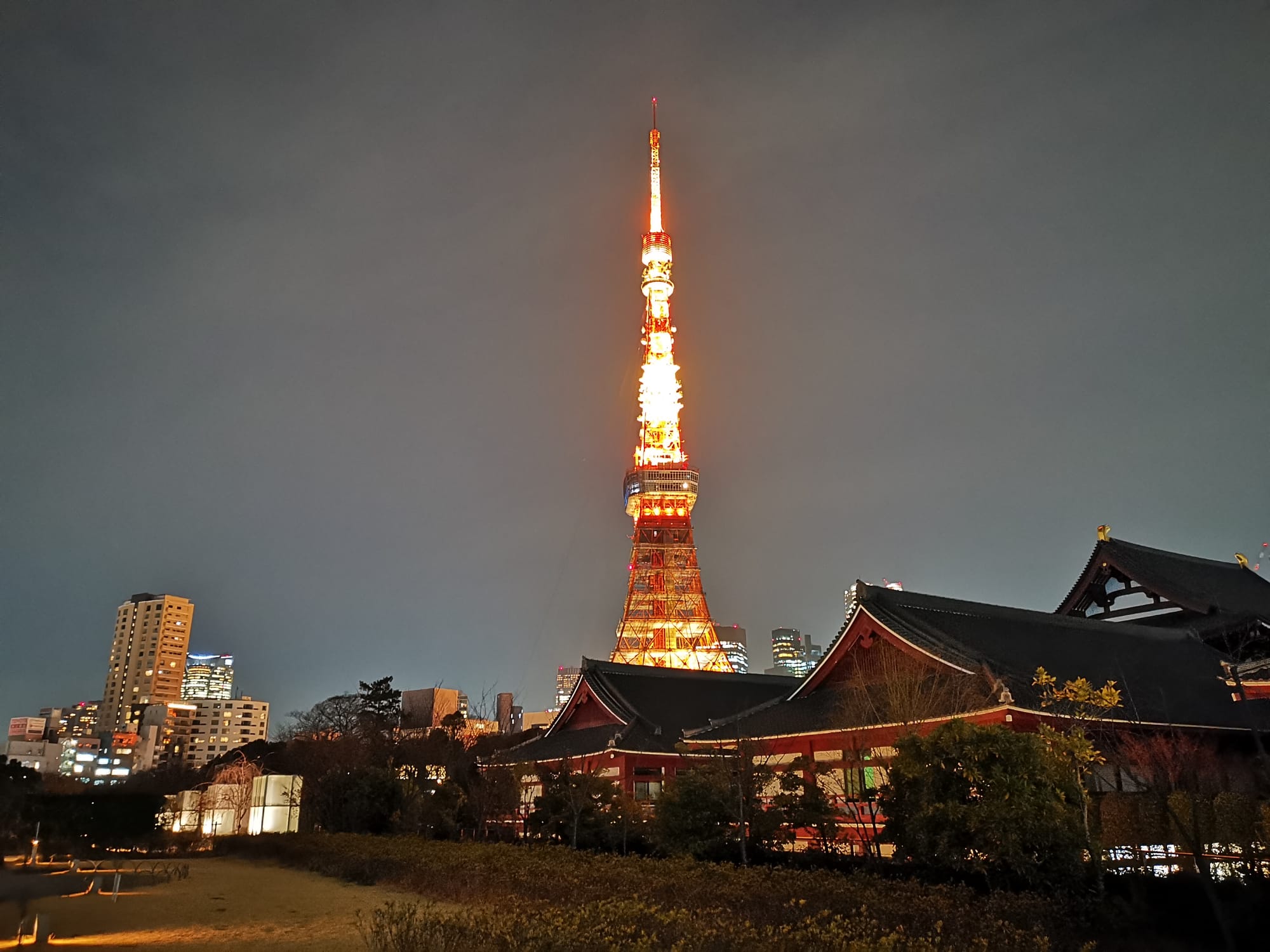
Earlier in the week, we met a really nice Japanese guy at our hostel called Takashi. He recommended, among other things, that we go and check out a temporary art exhibition by the art collective teamLab. It sounded interesting so we decided to give it a go.
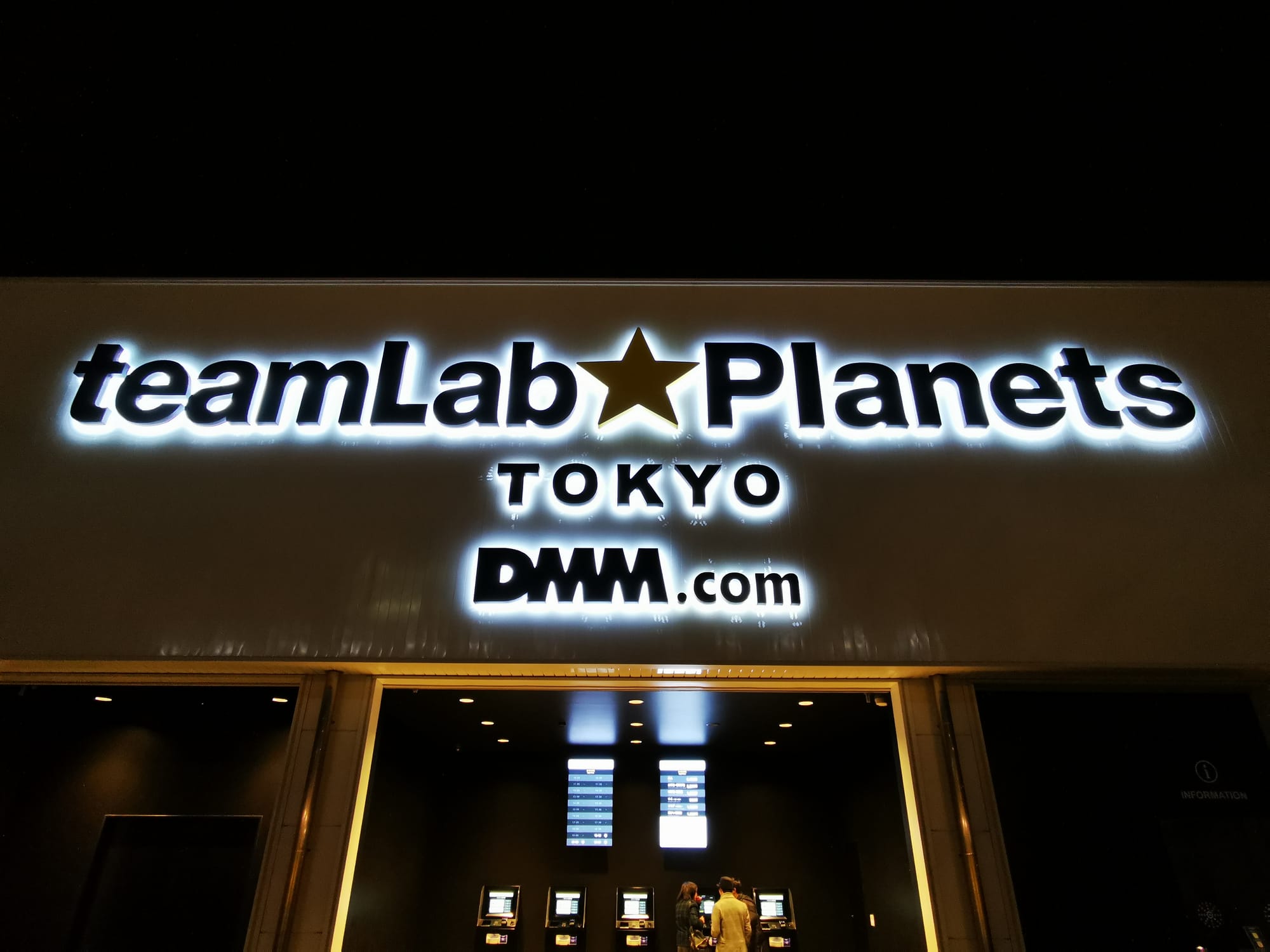
The exhibition was called Planets and featured a stunning variety of immersive installations which combined digital effects with tactile environments. It was a totally mesmerising and unique experience.
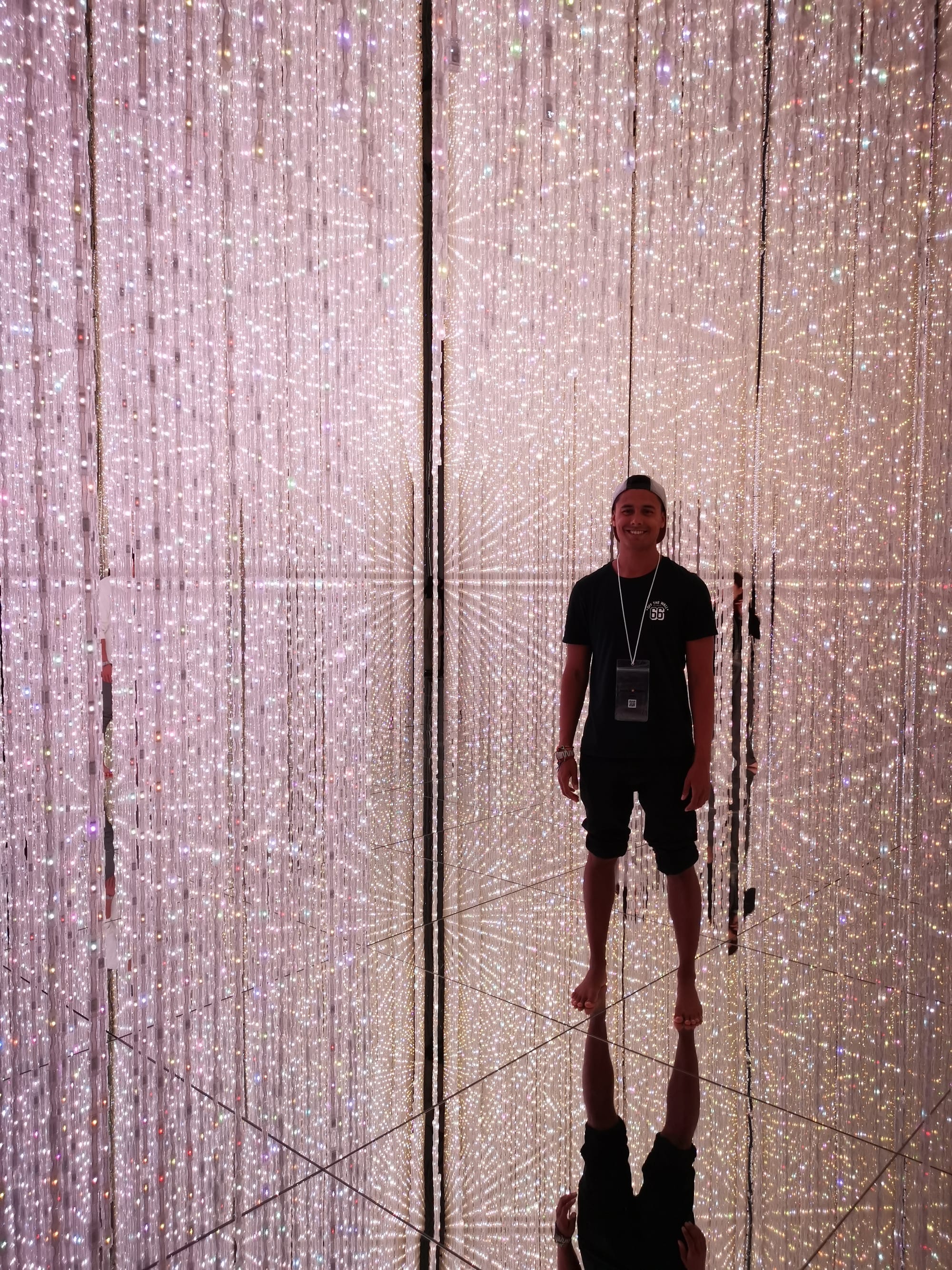
To sum up - Tokyo is an awesome place and you should definitely go if you get the chance! We cannot wait to see what the rest of Japan has in store for us.
